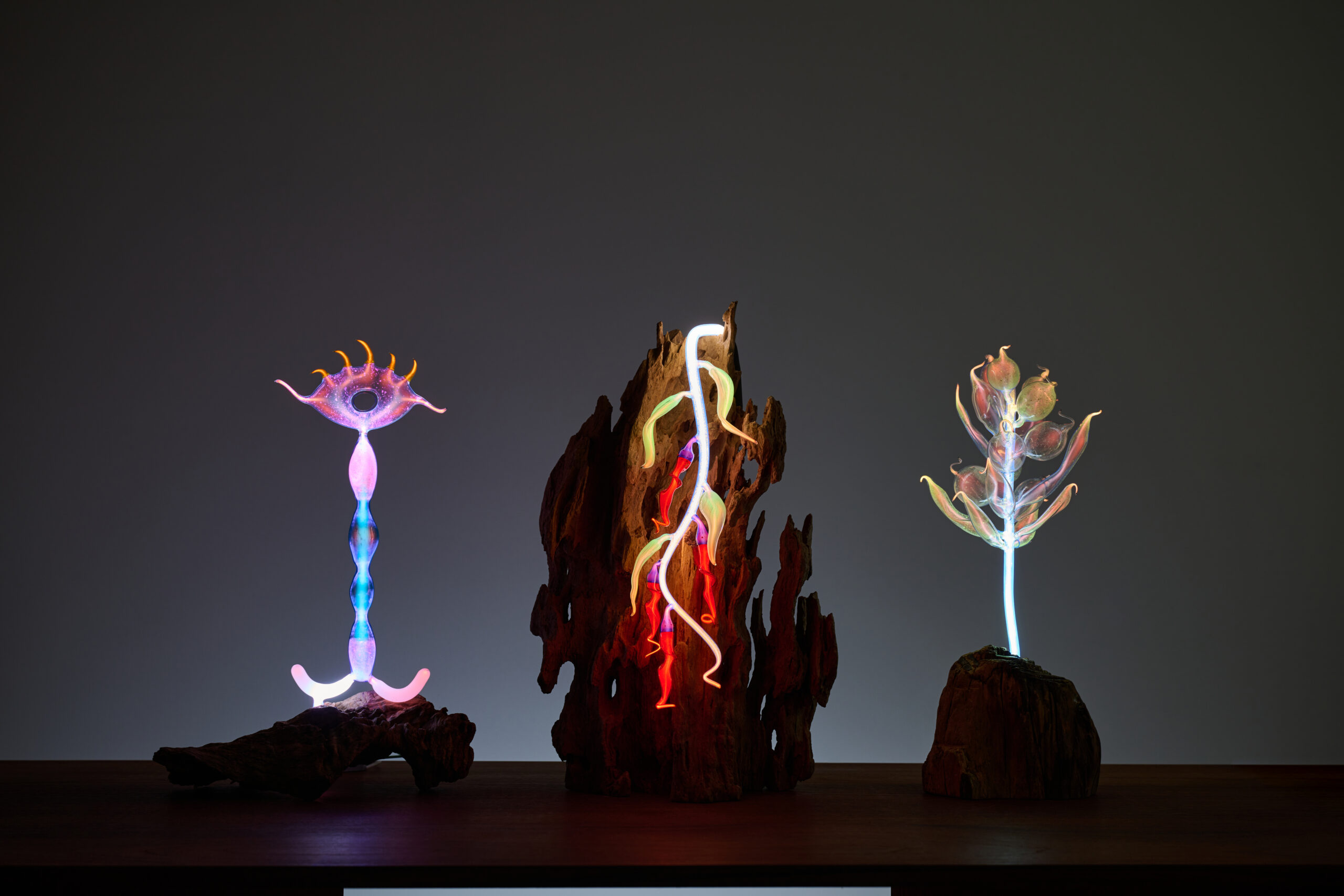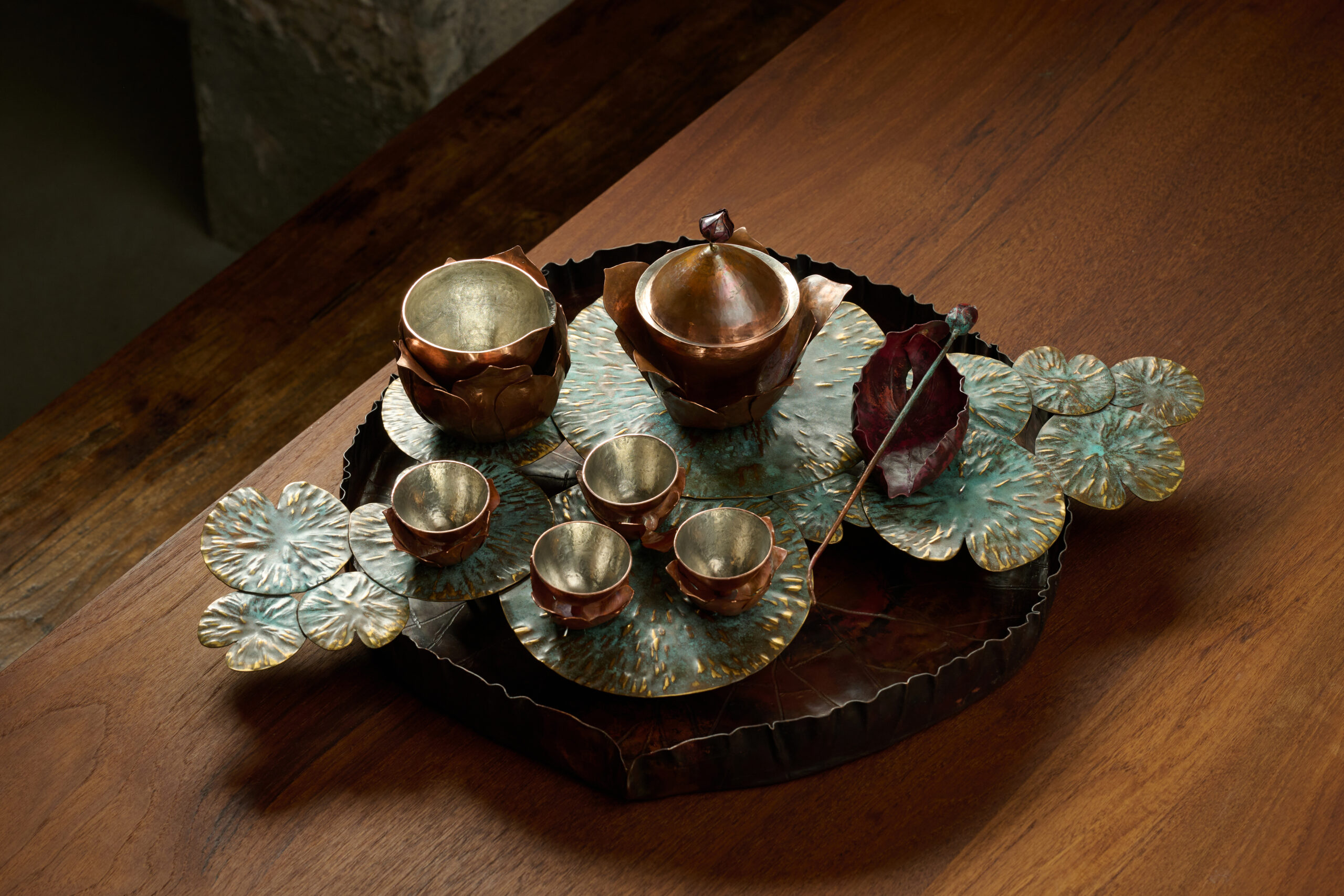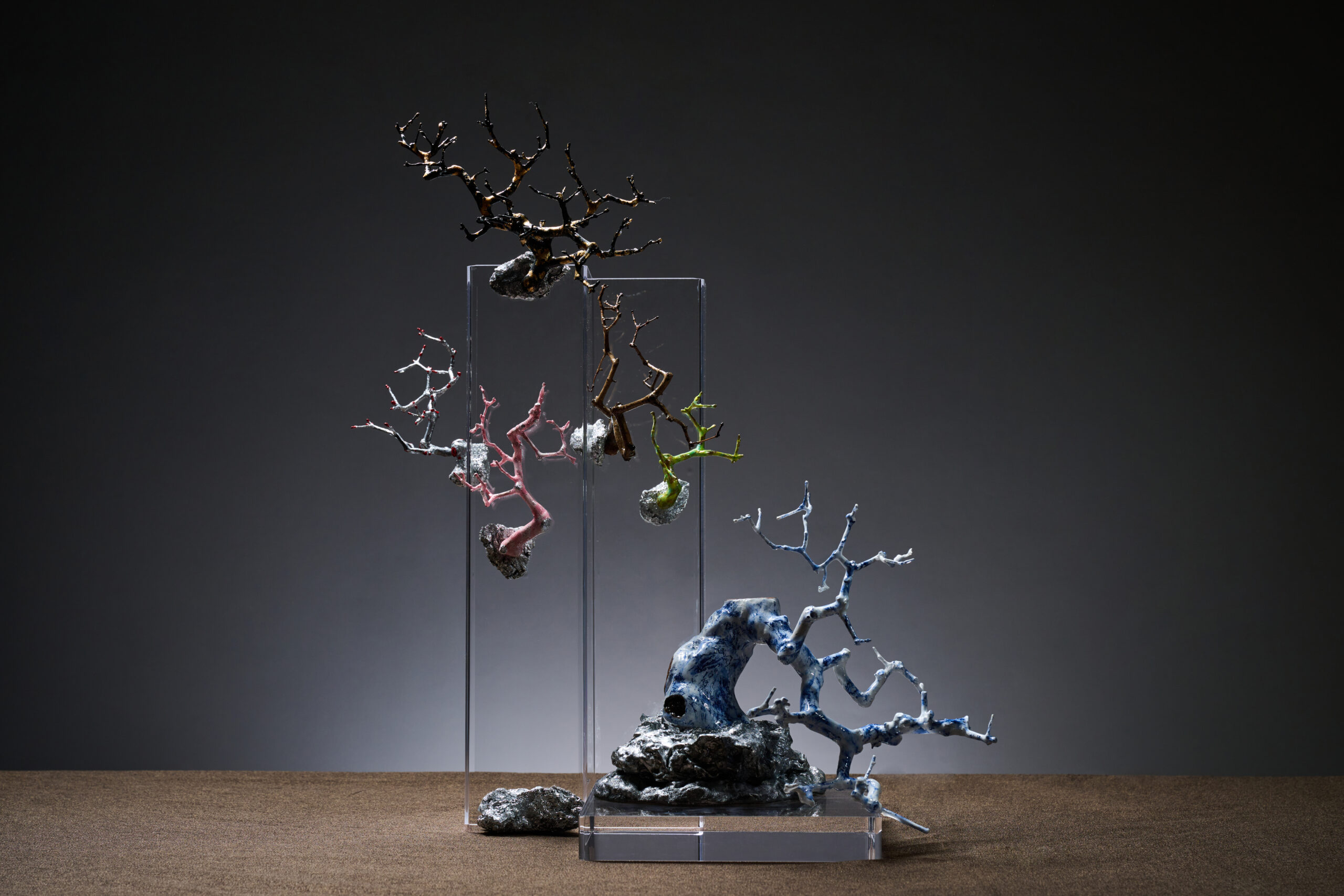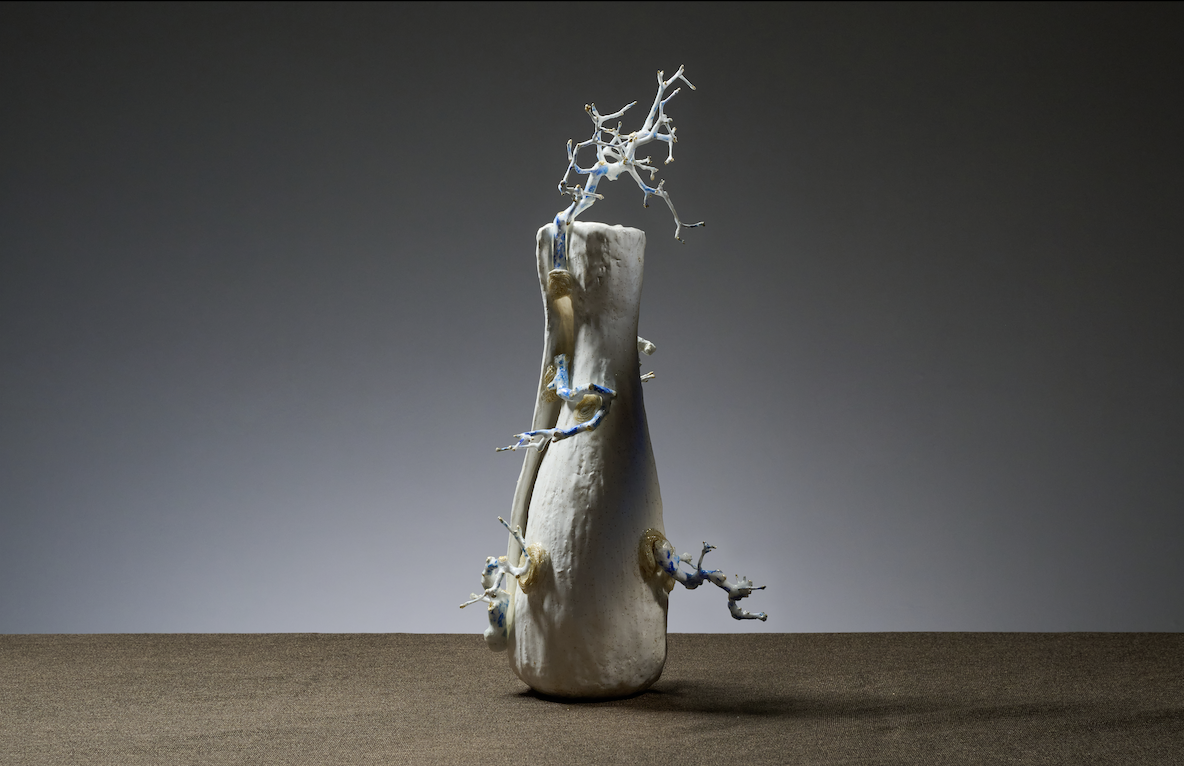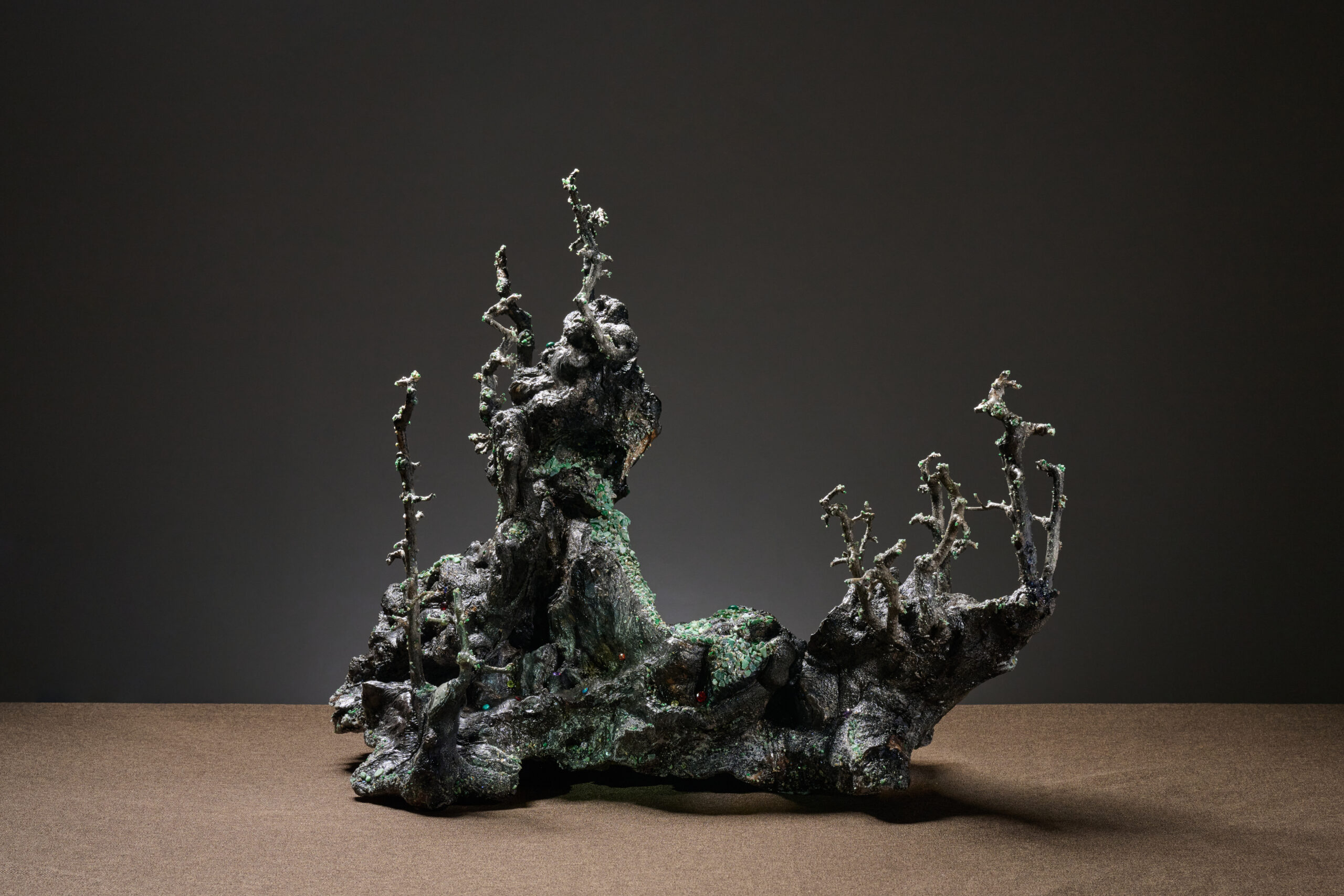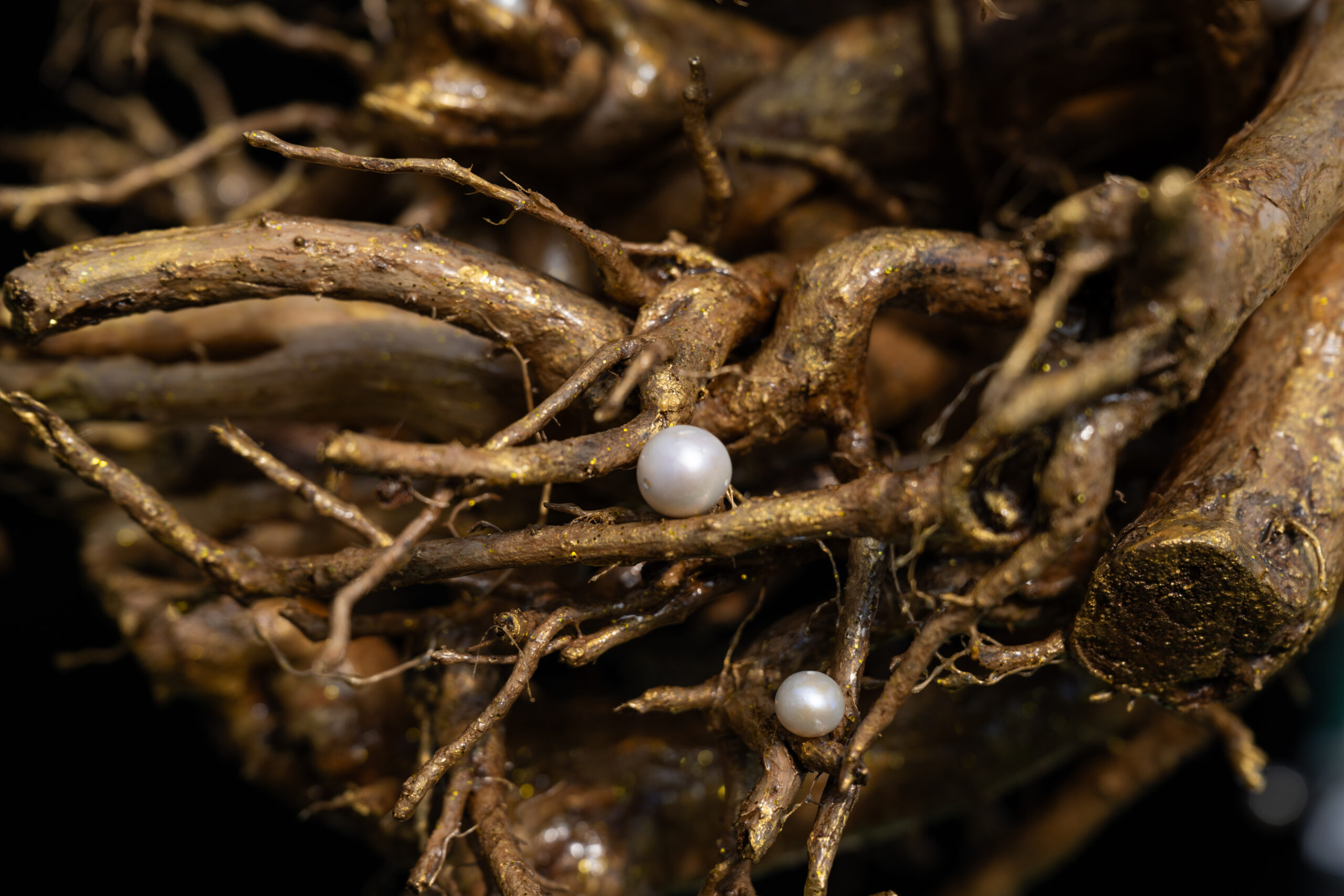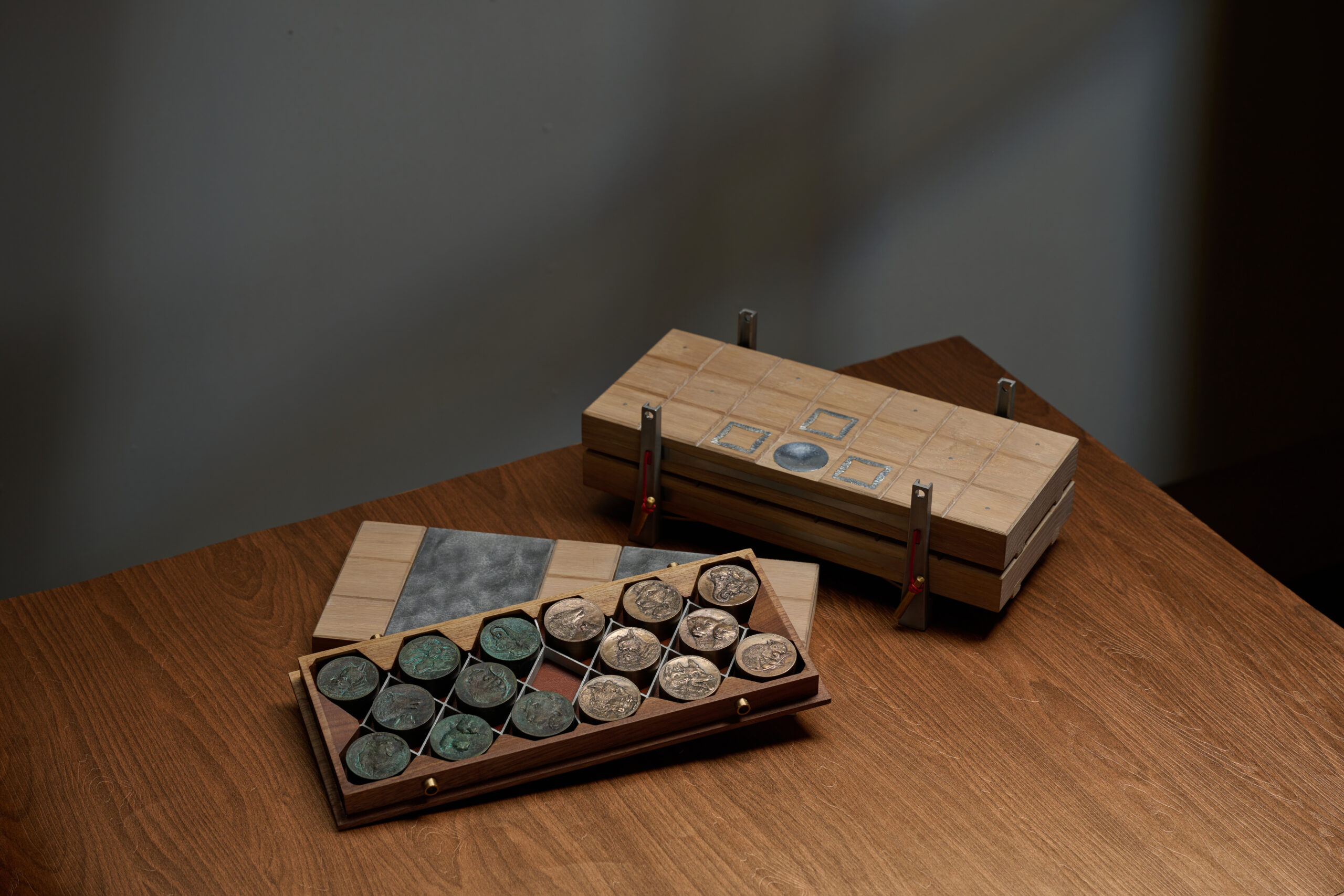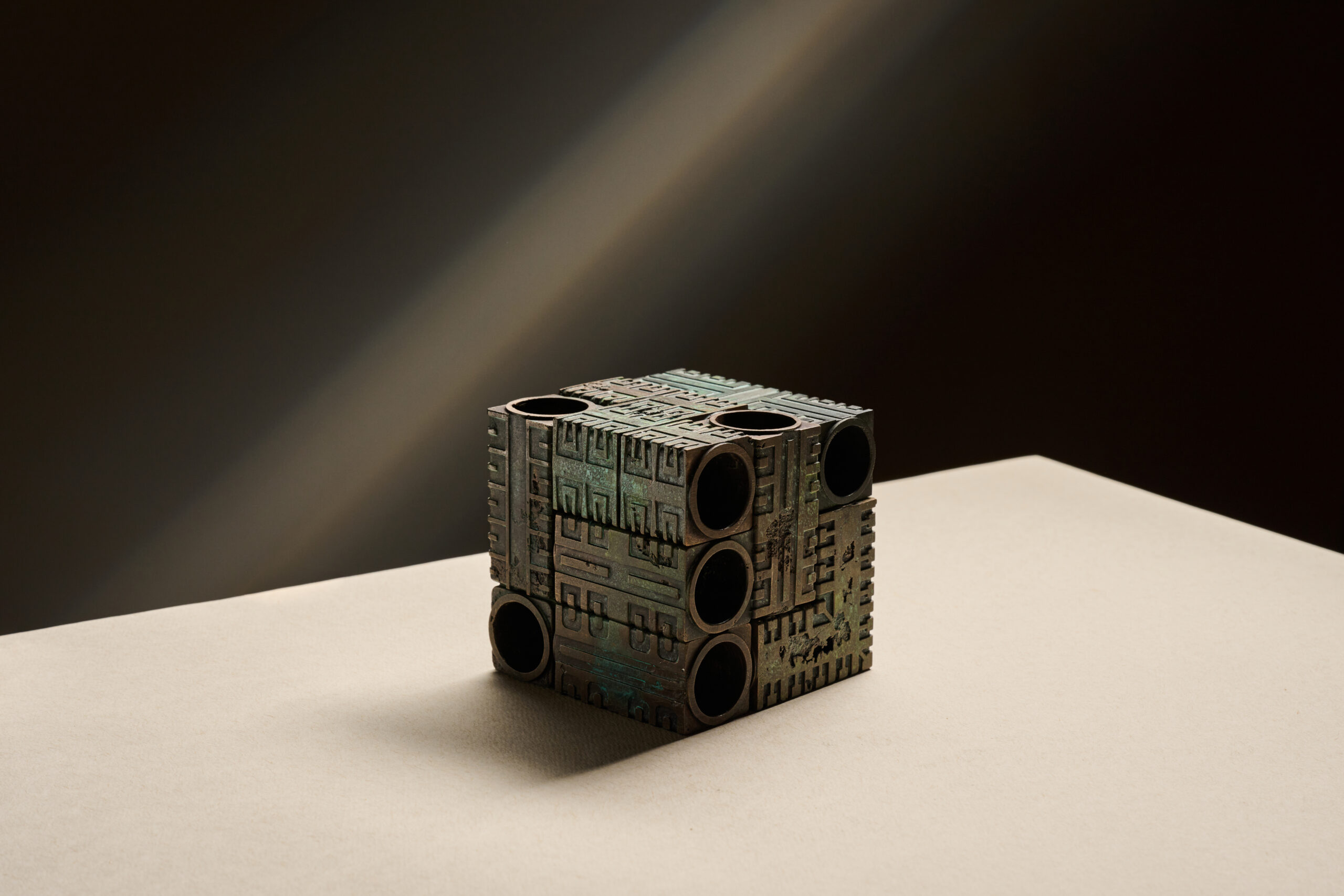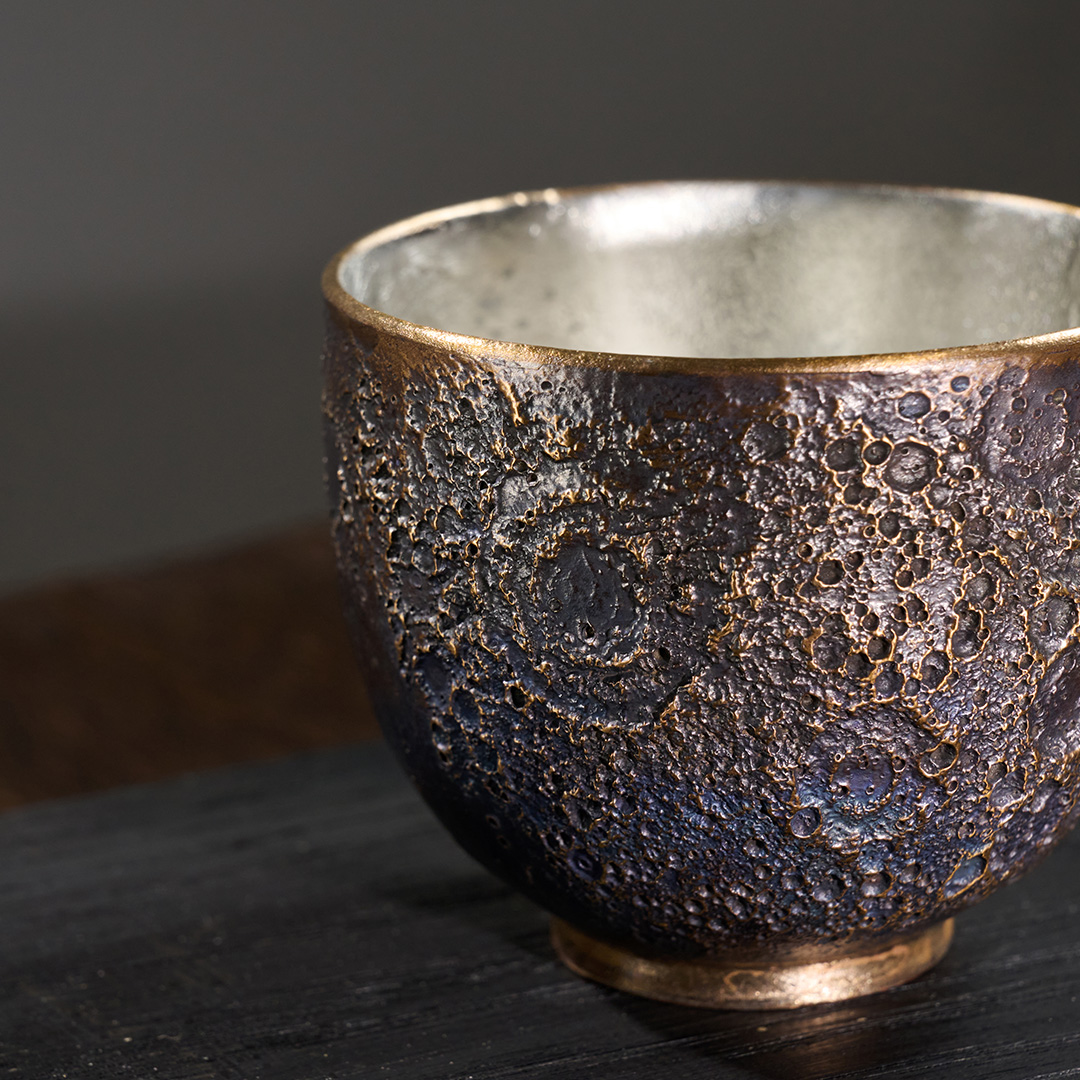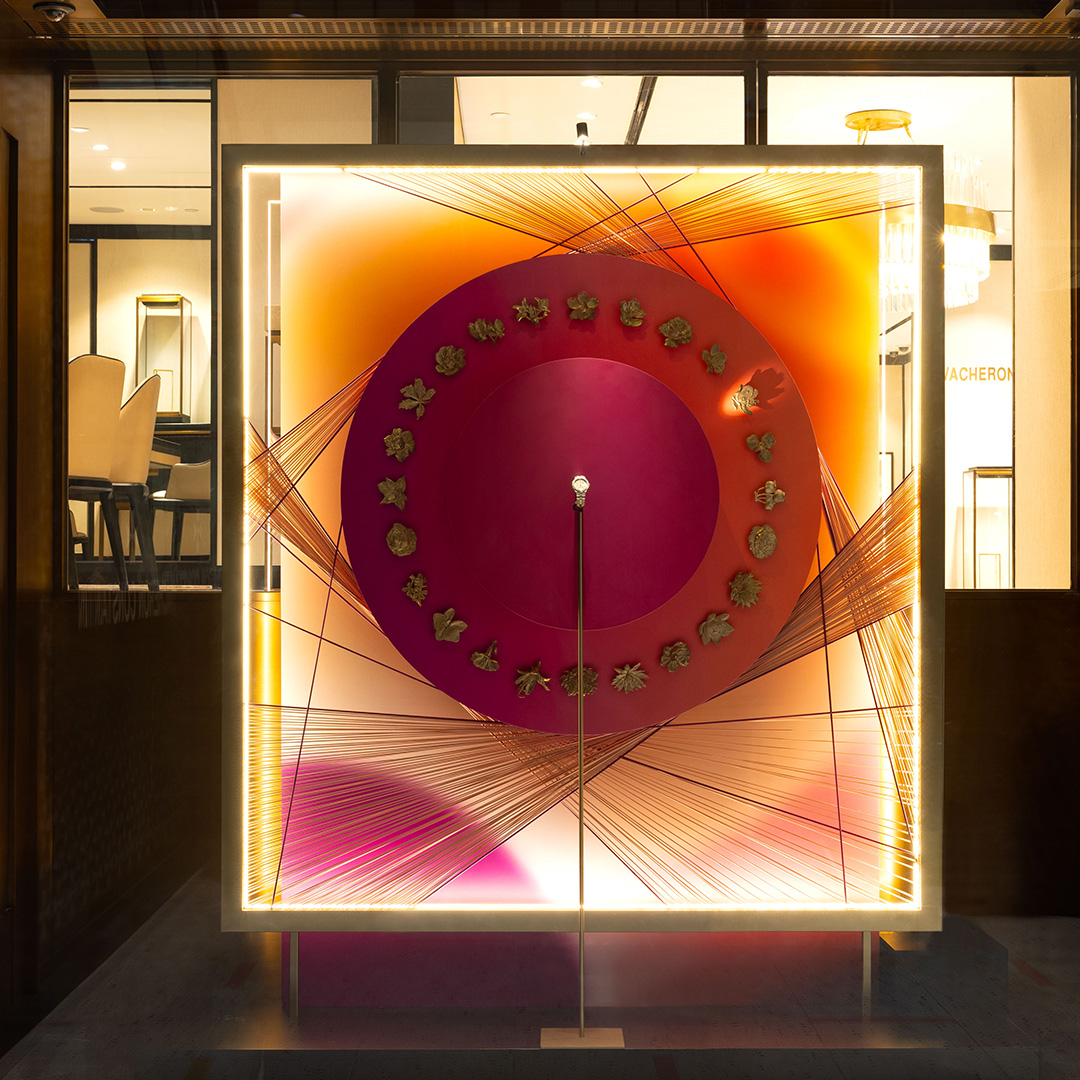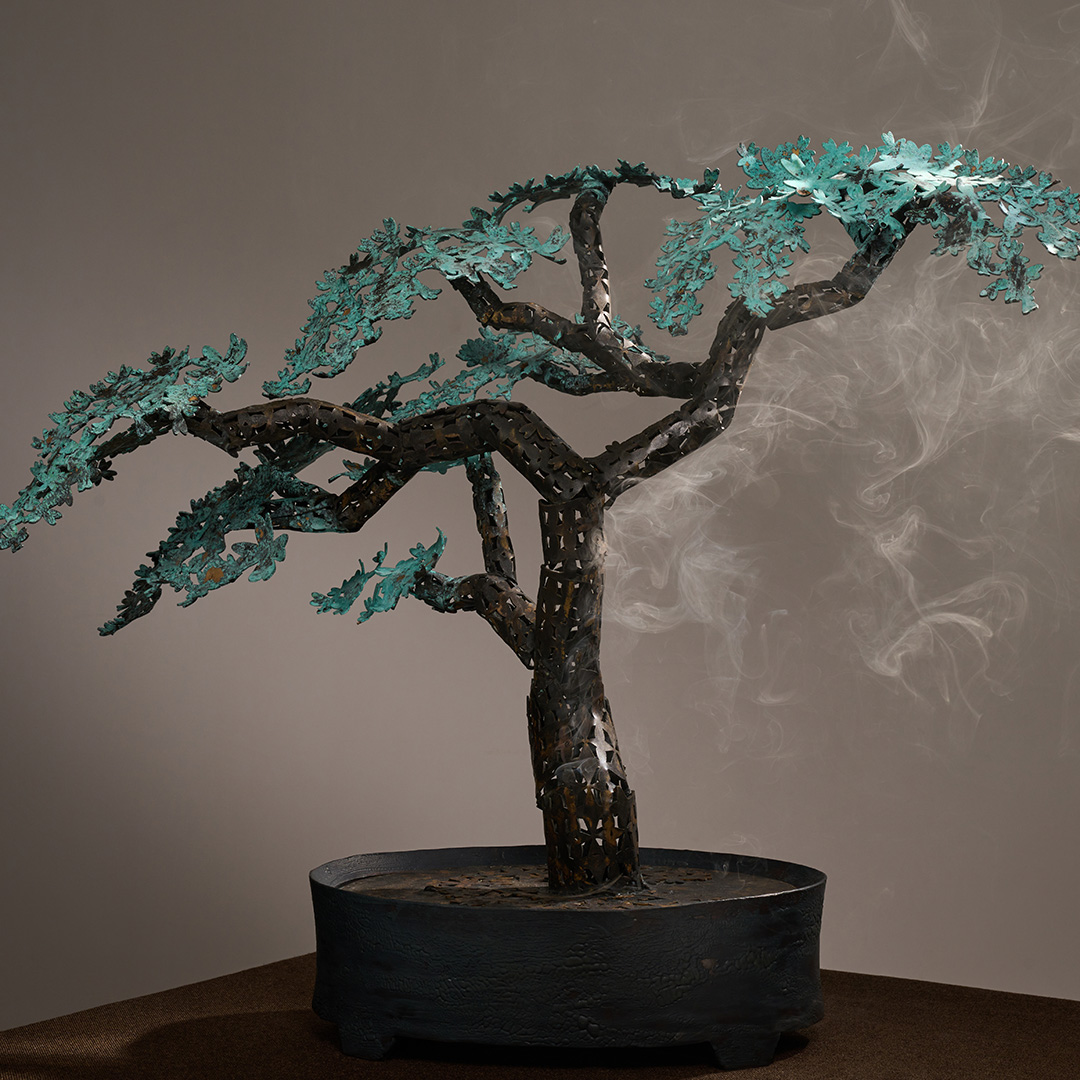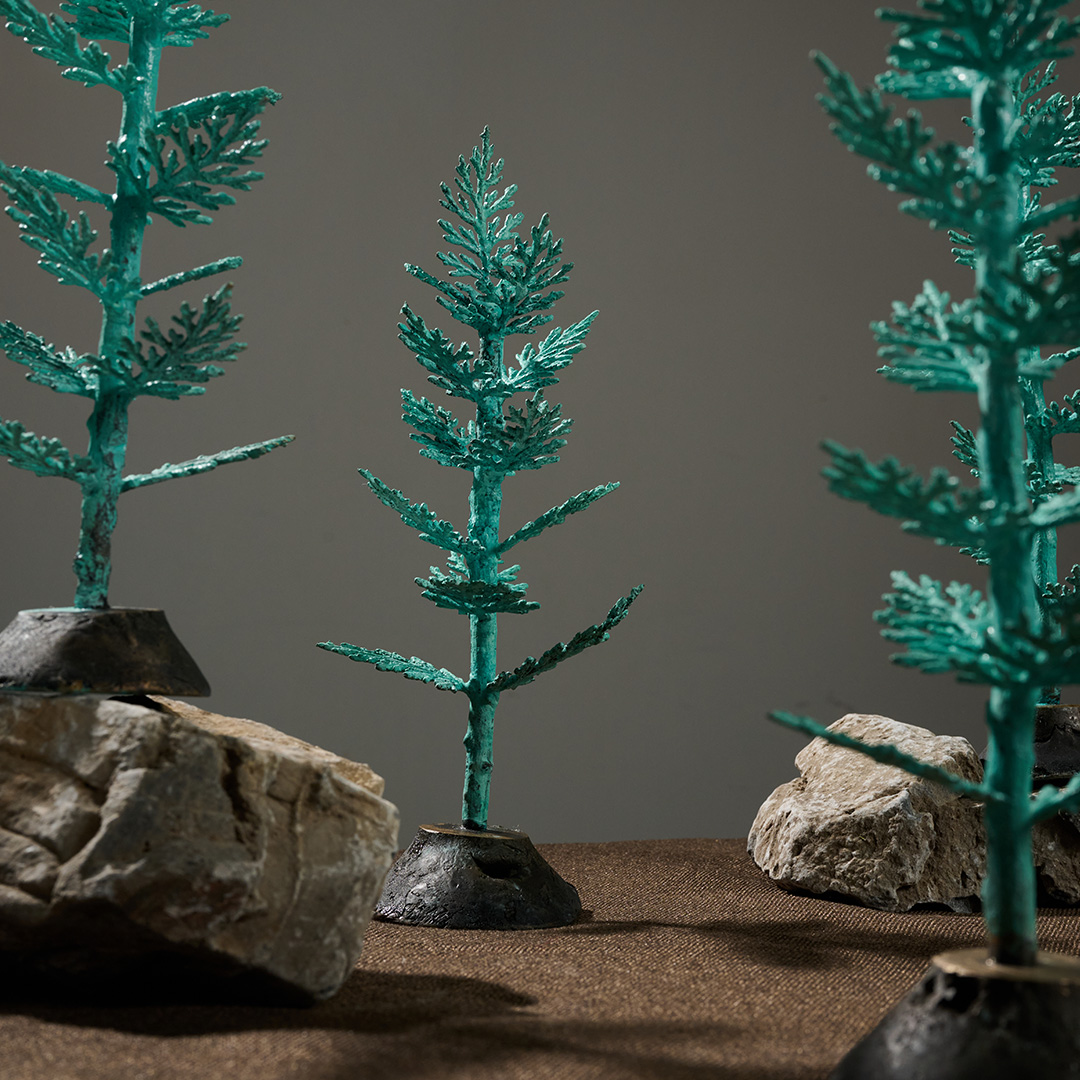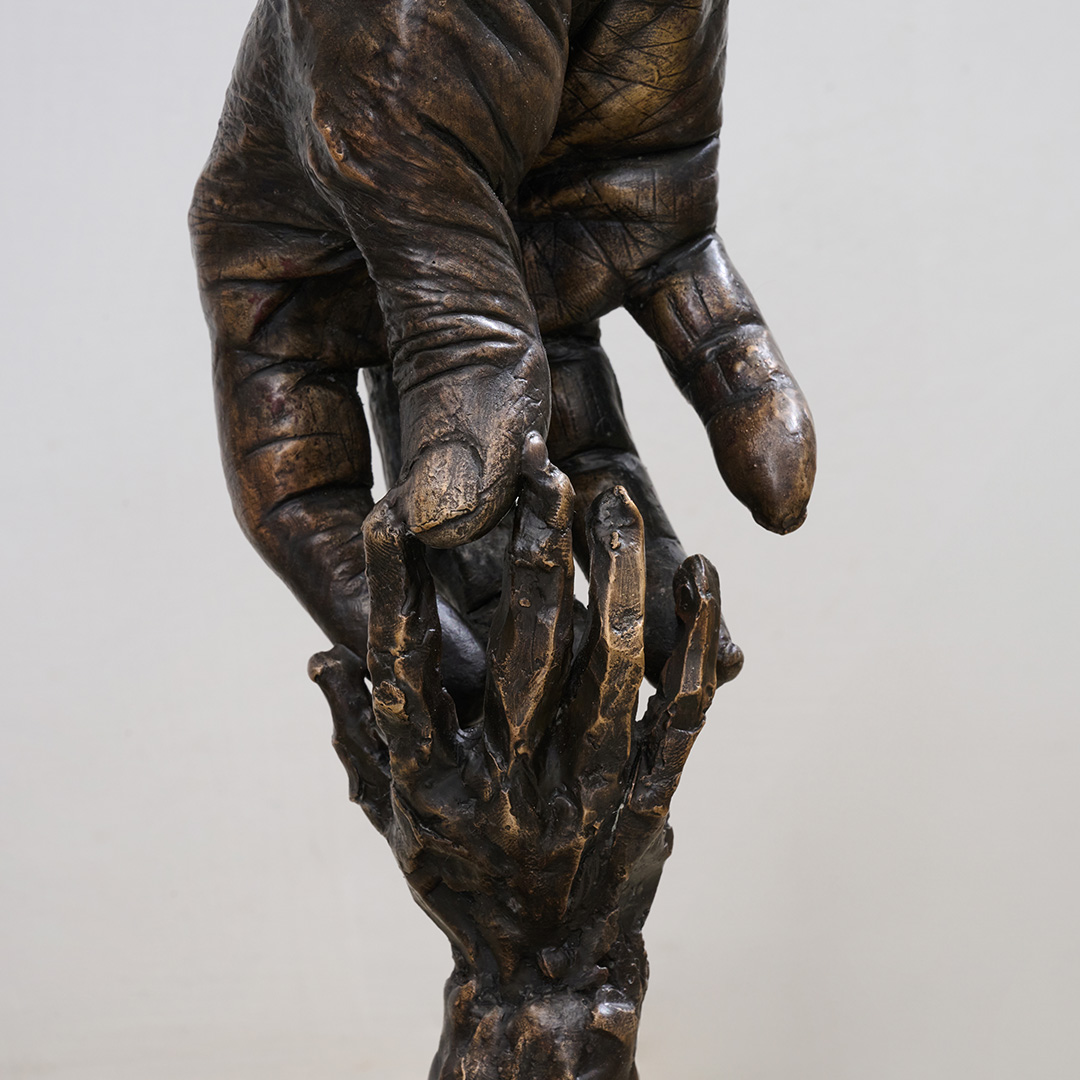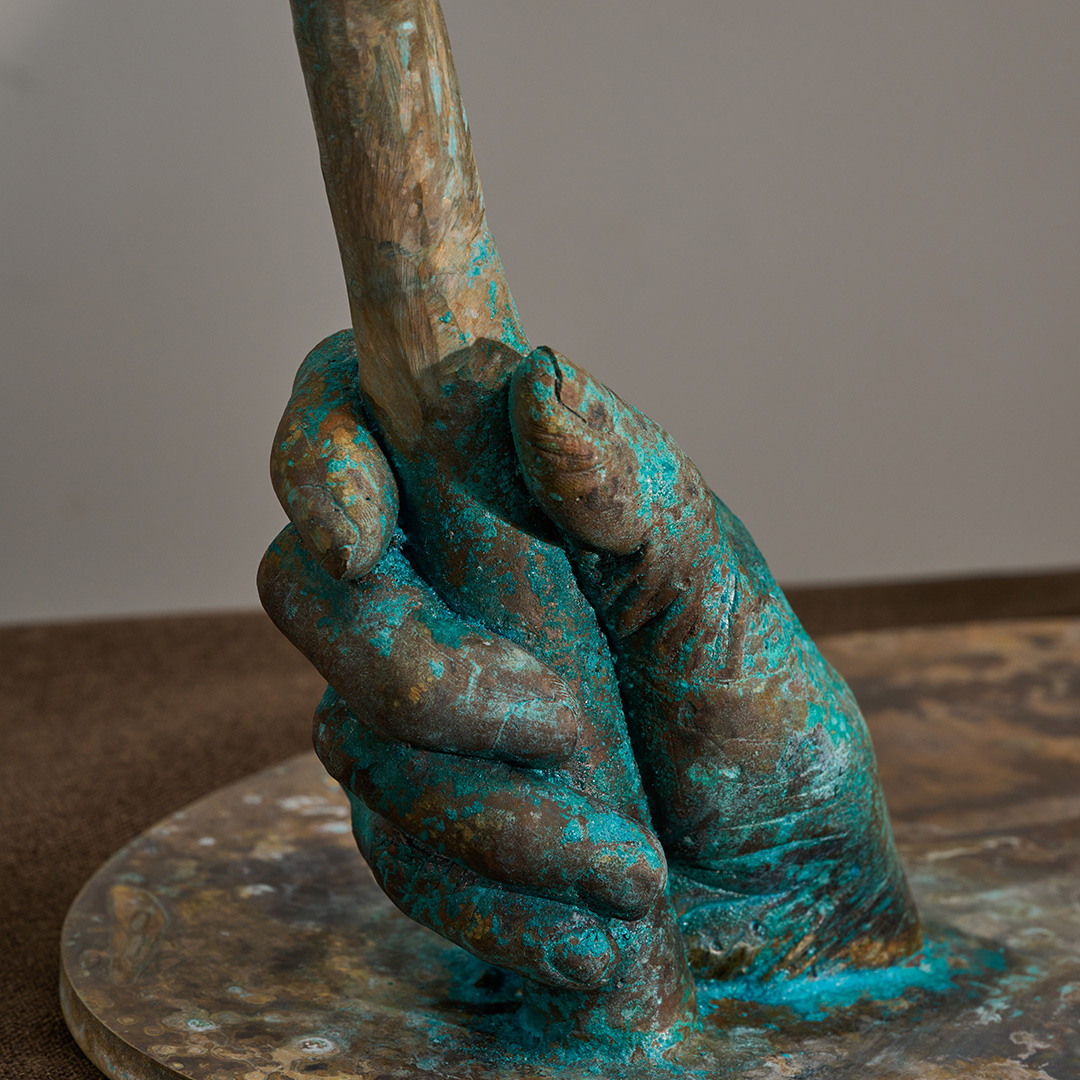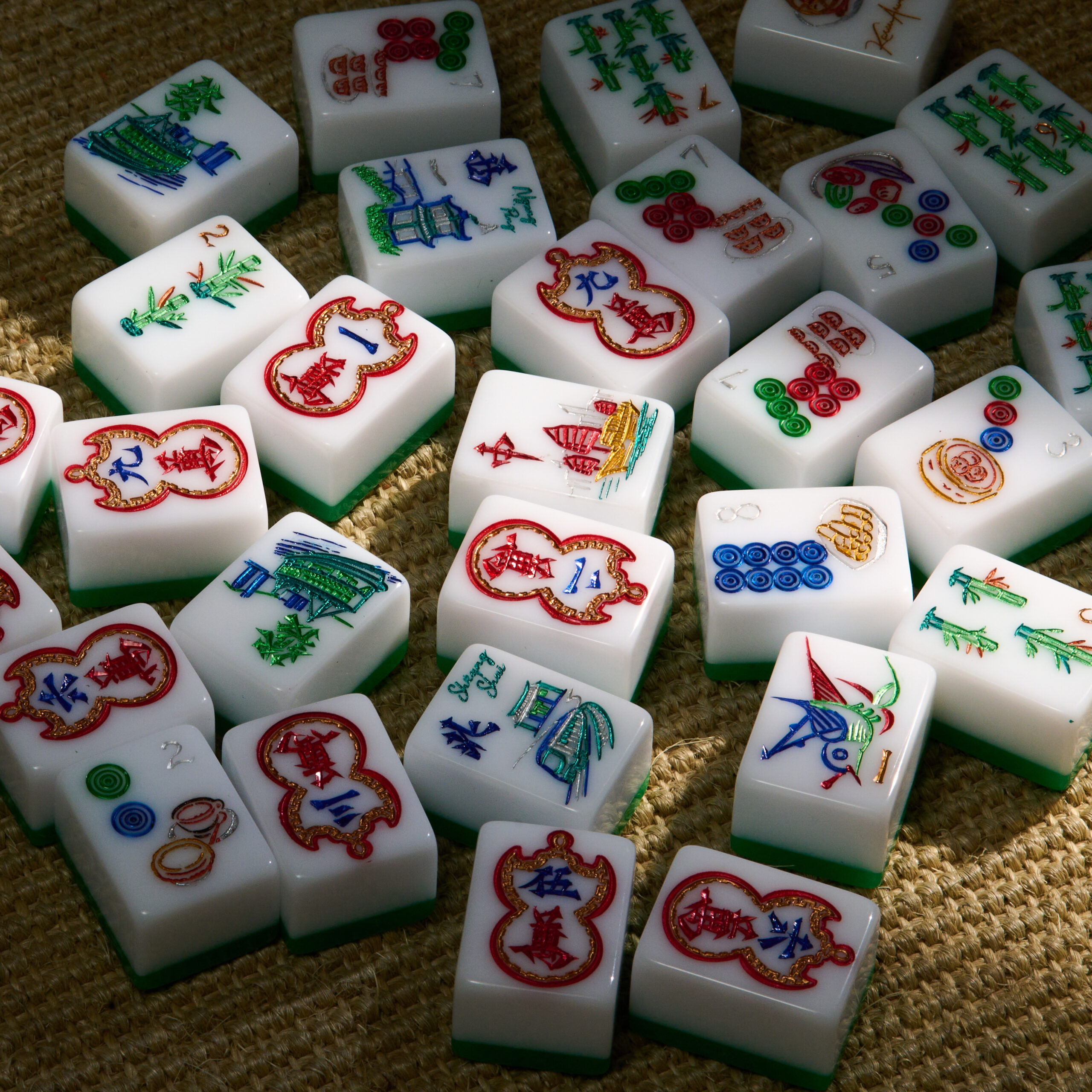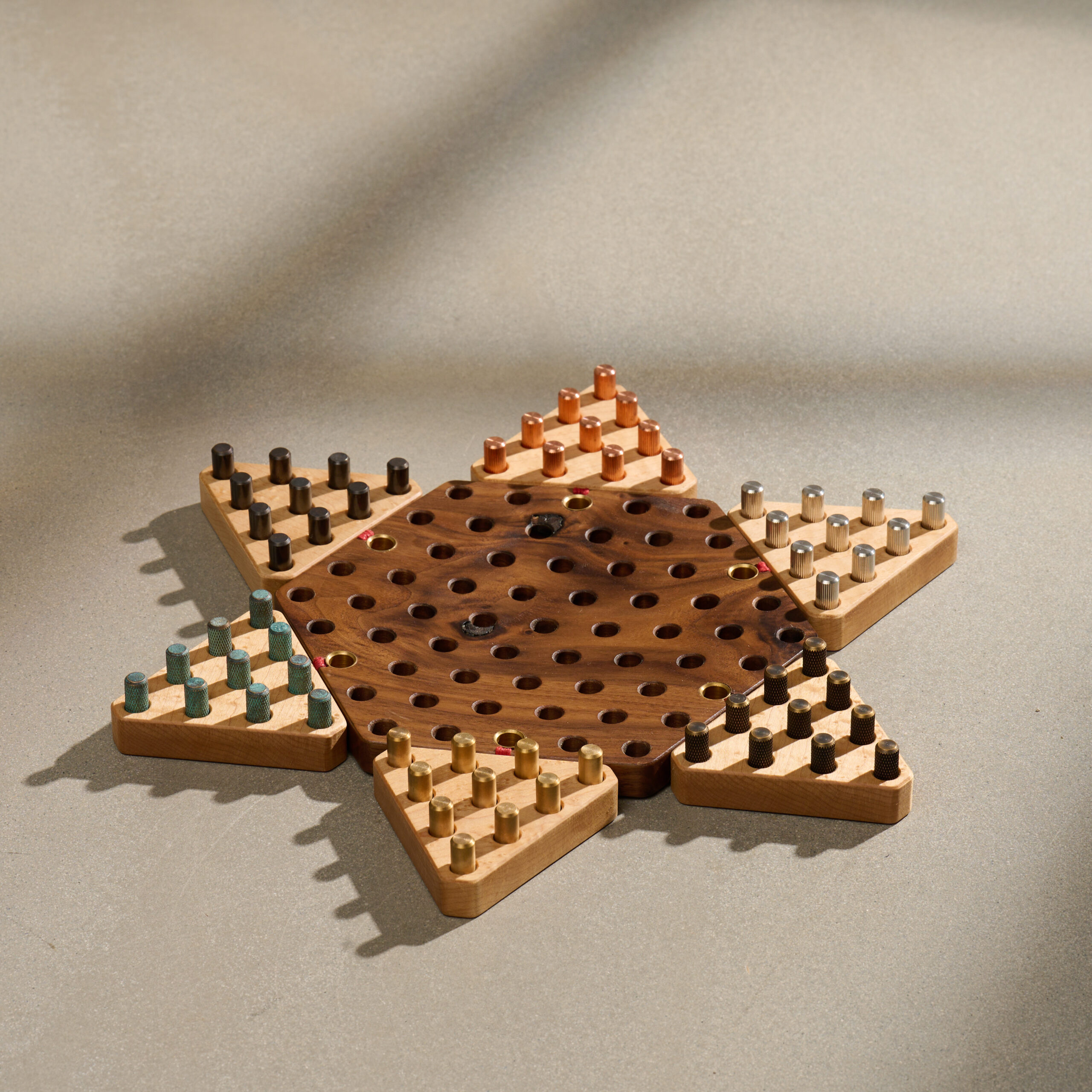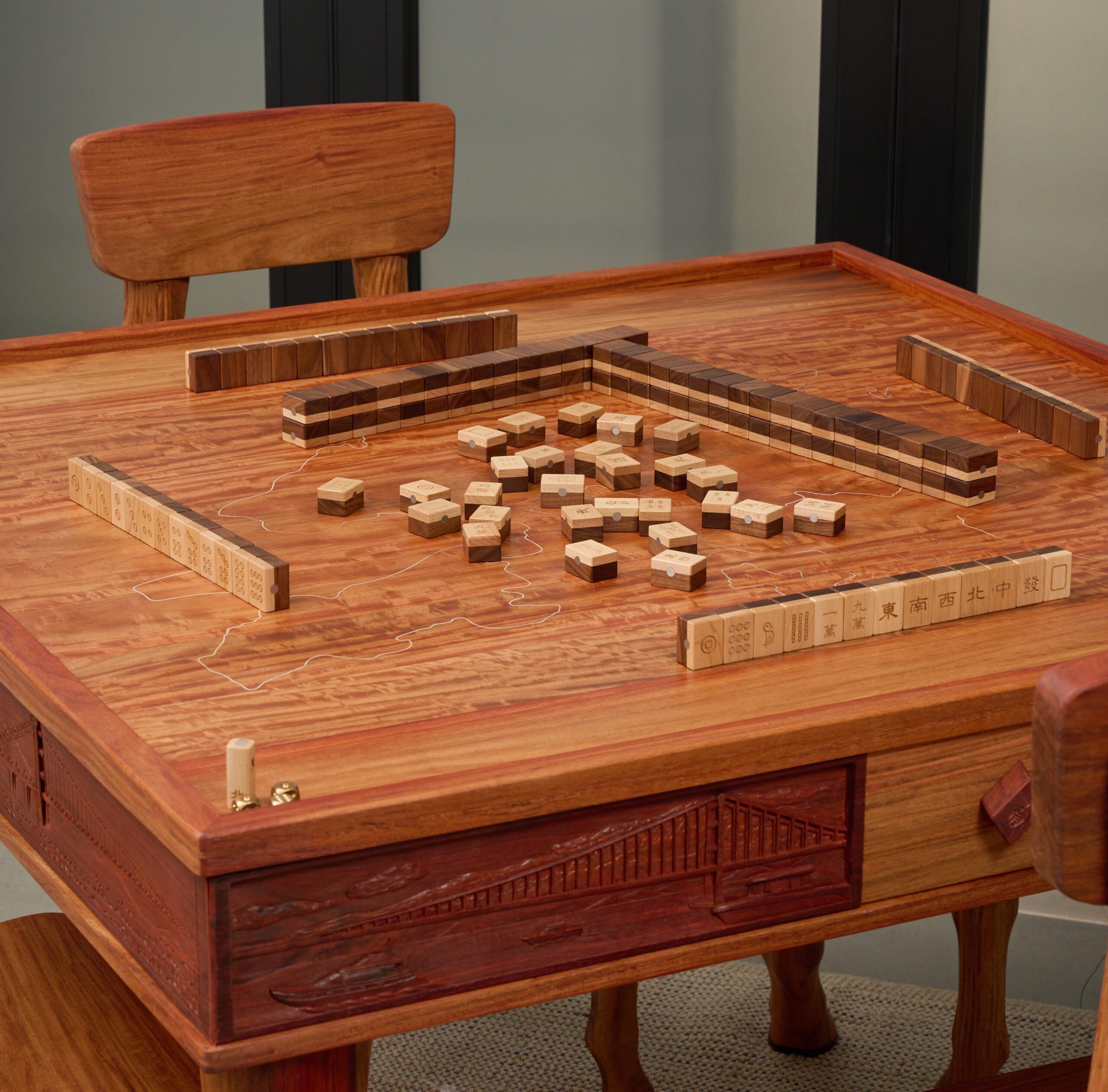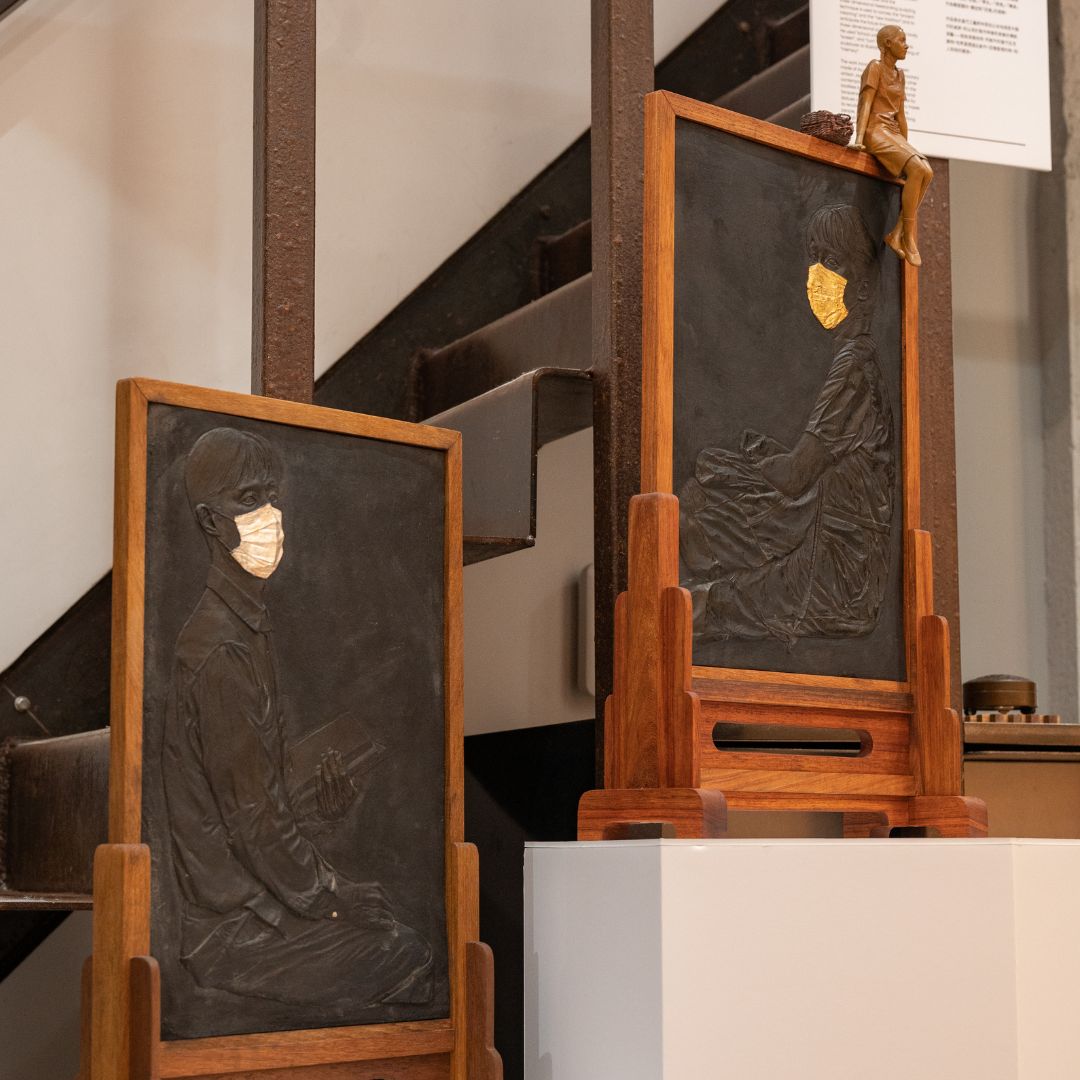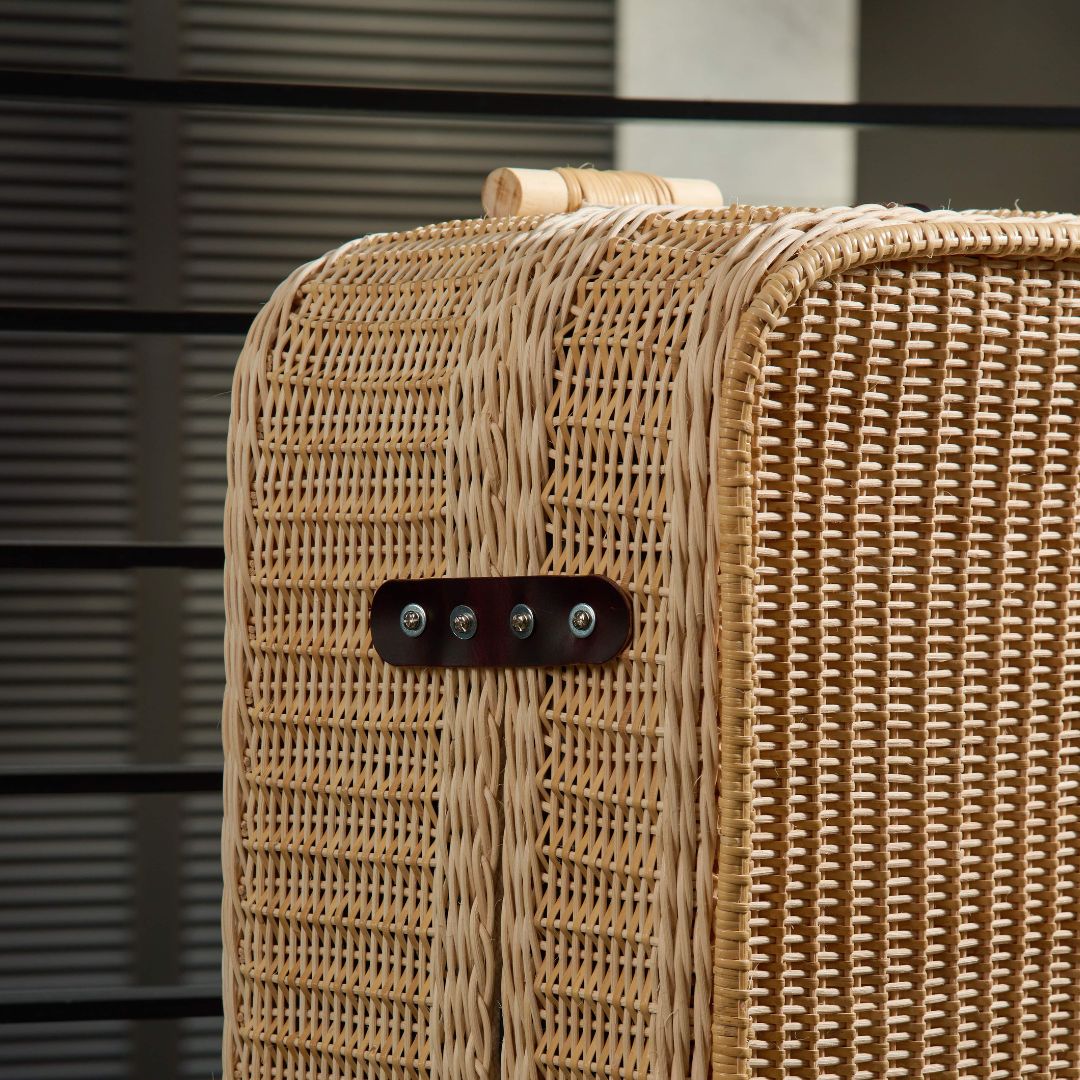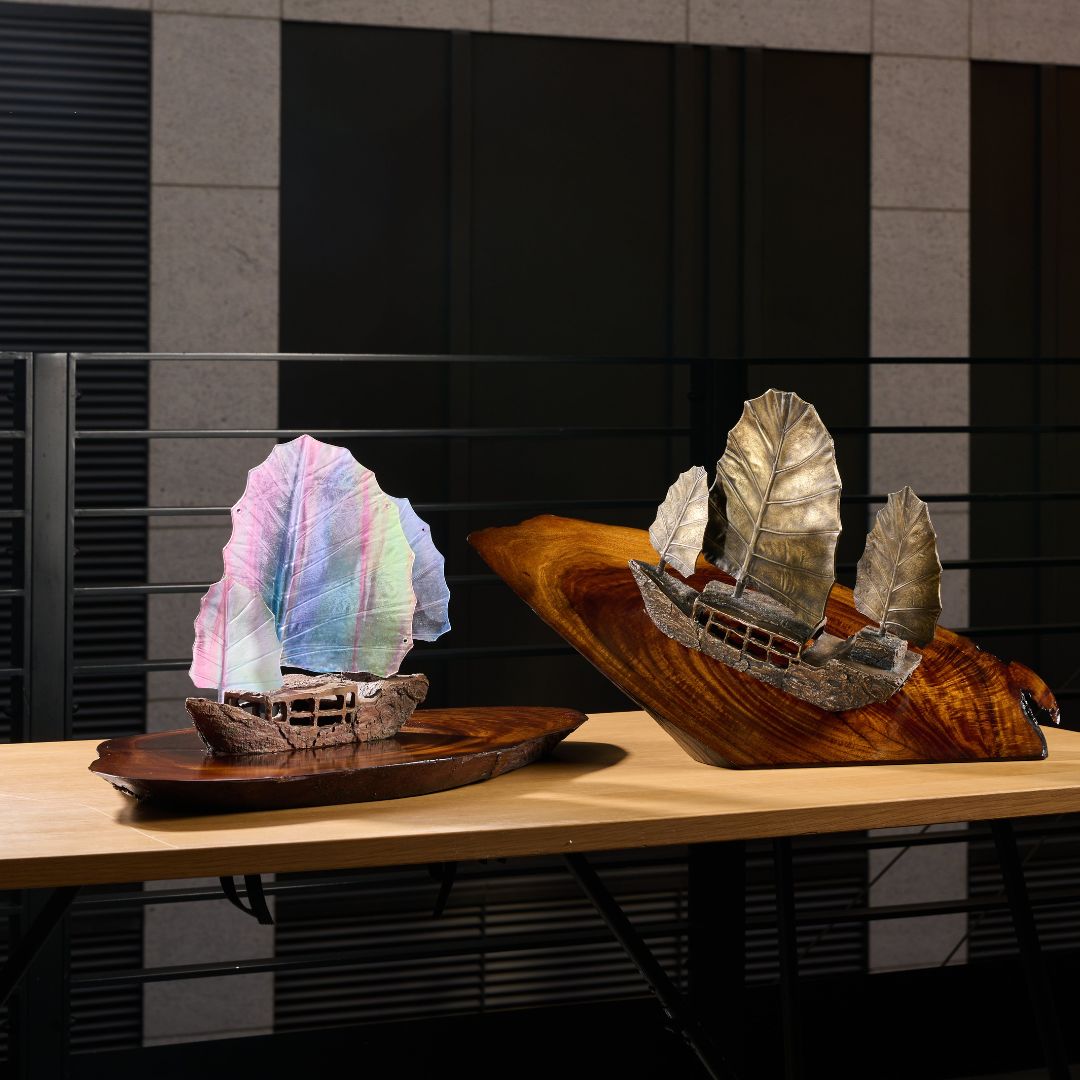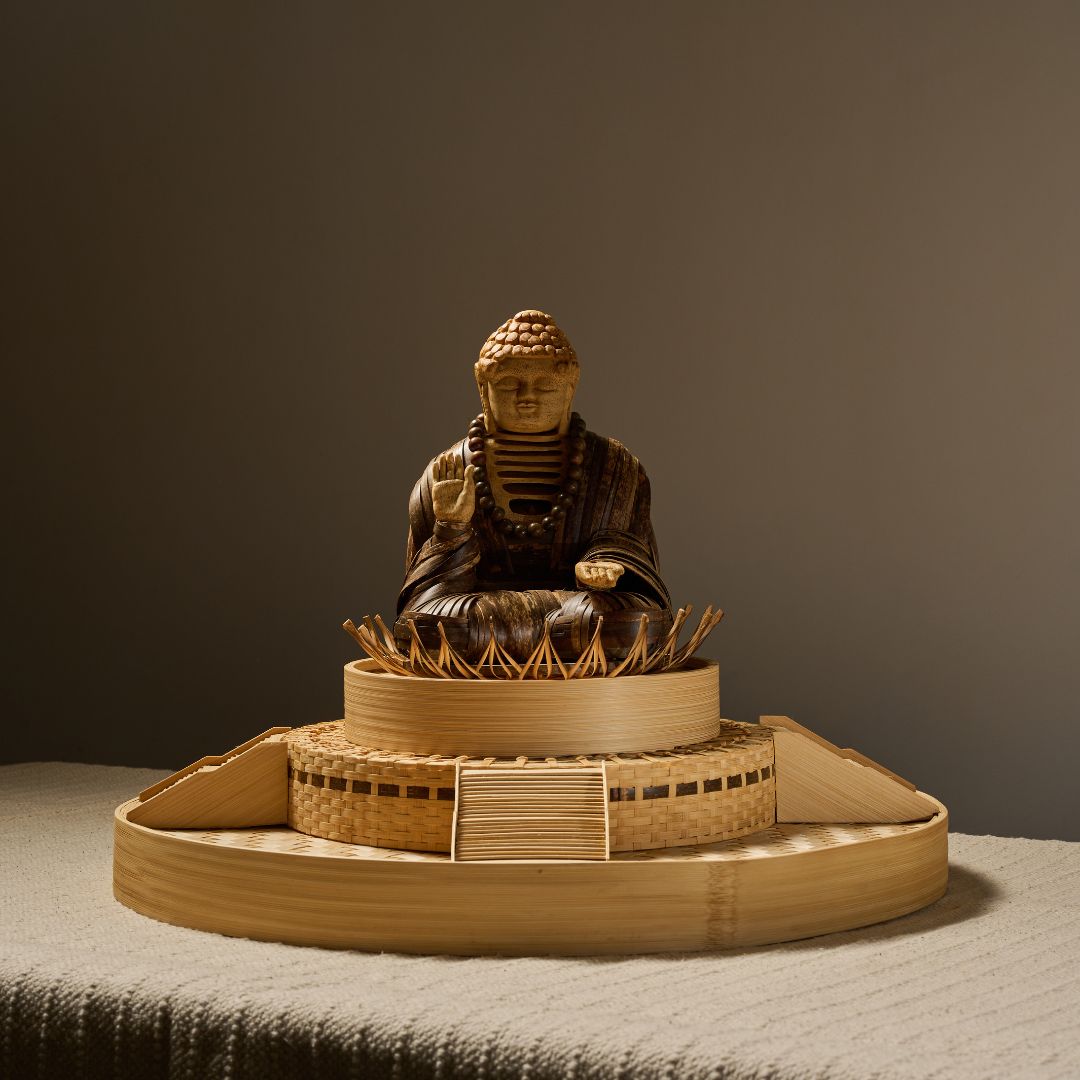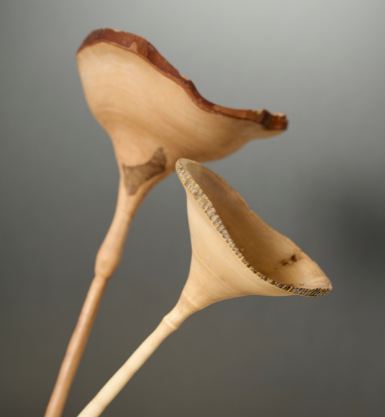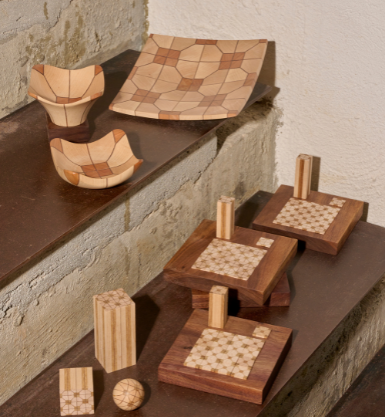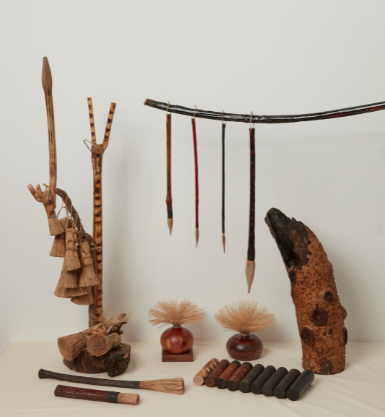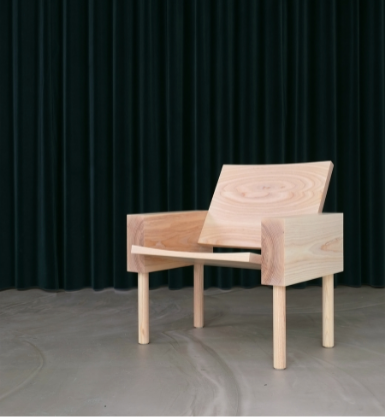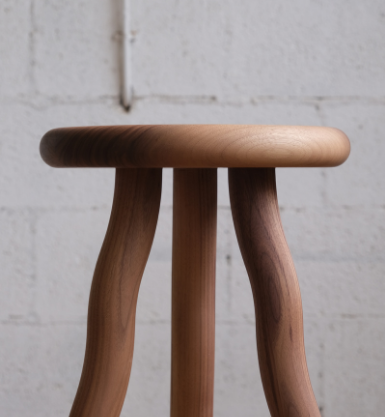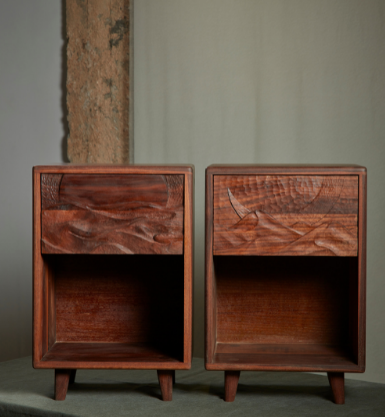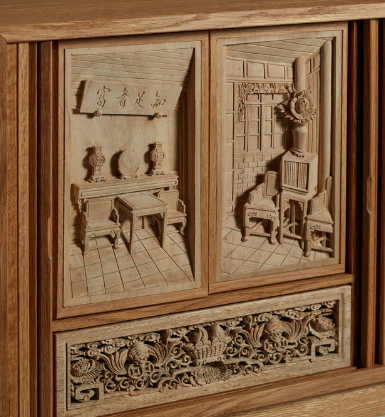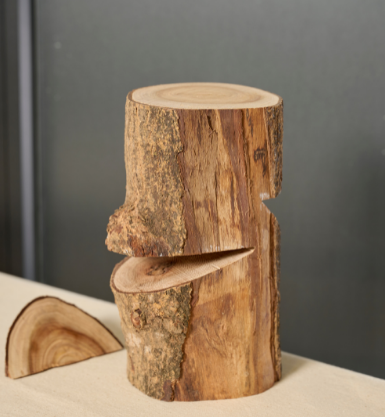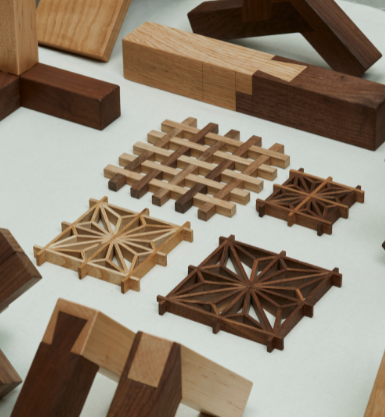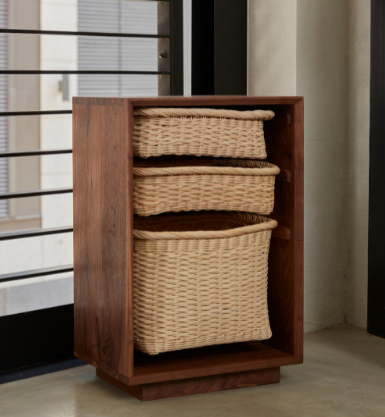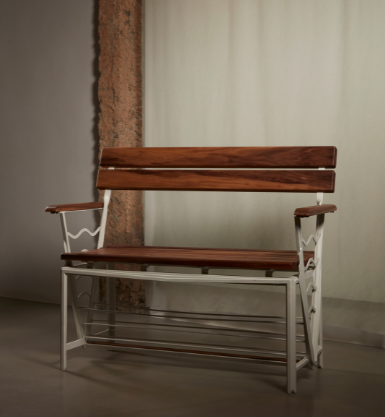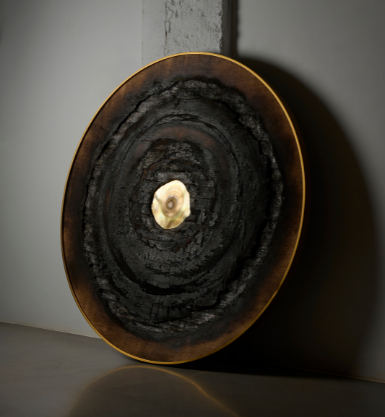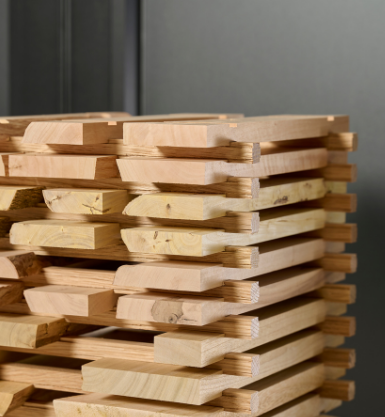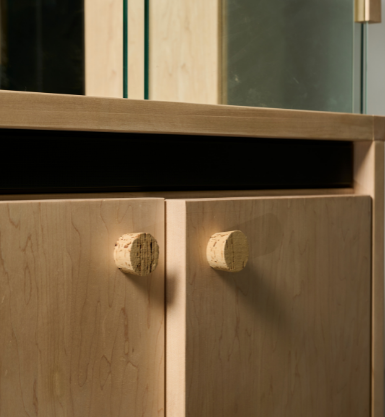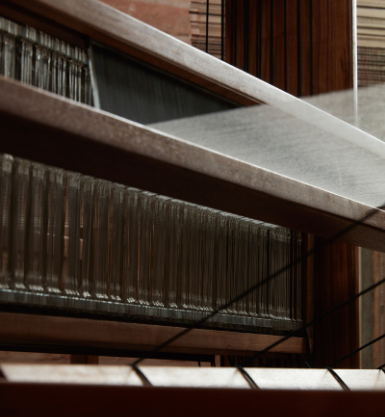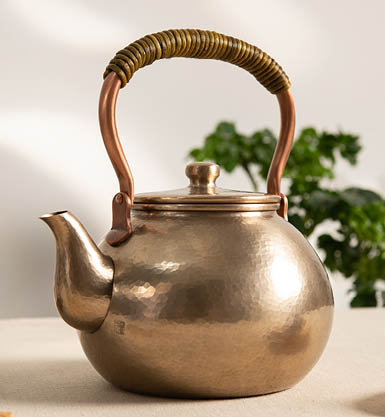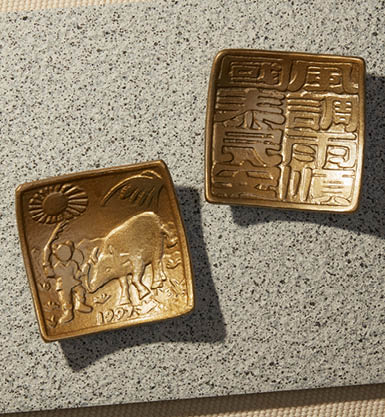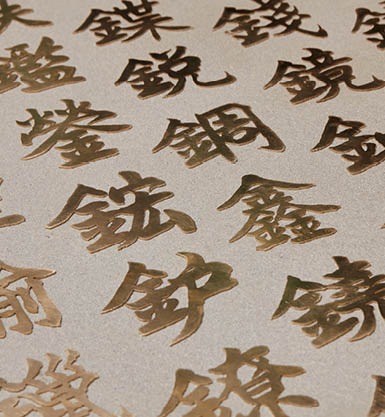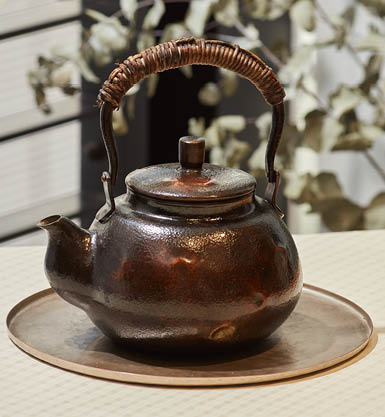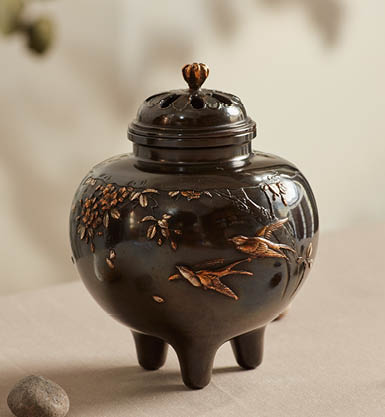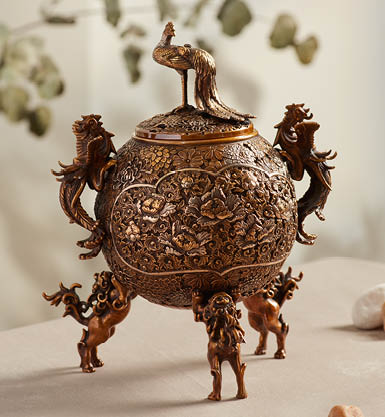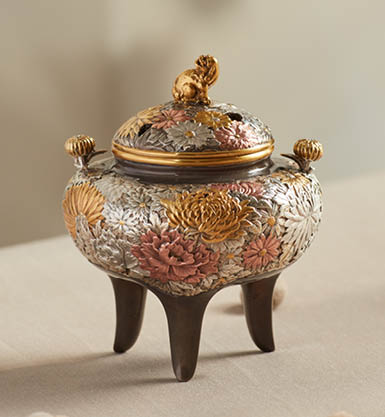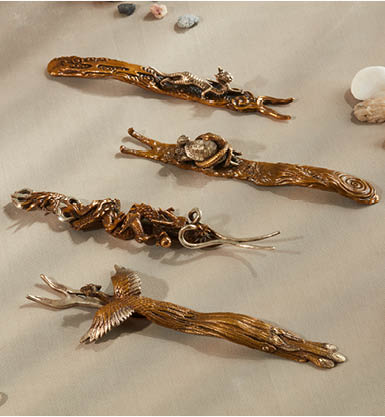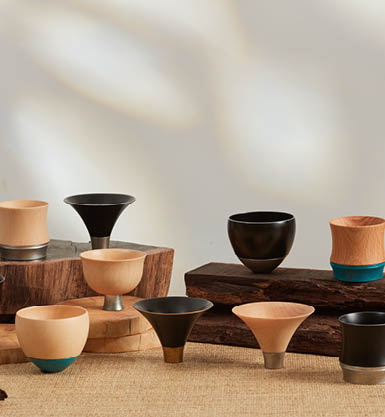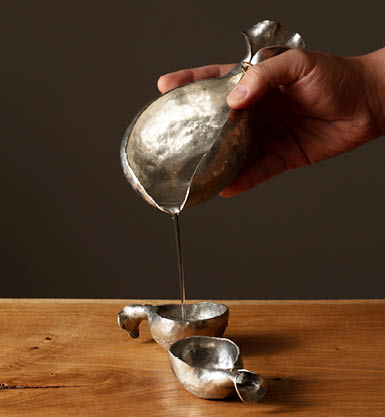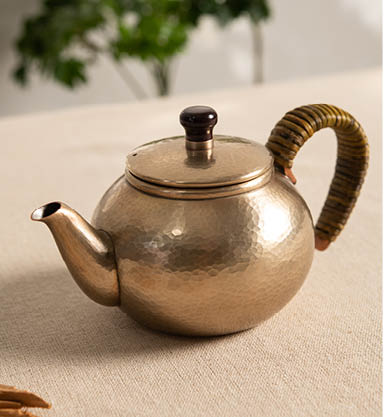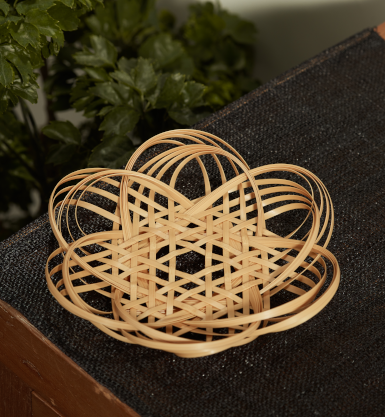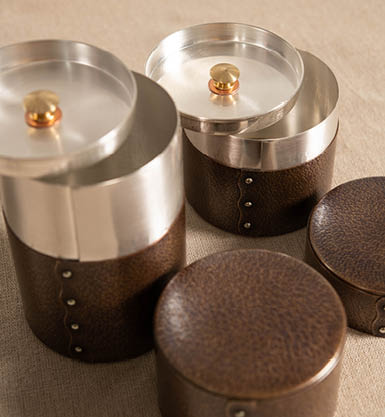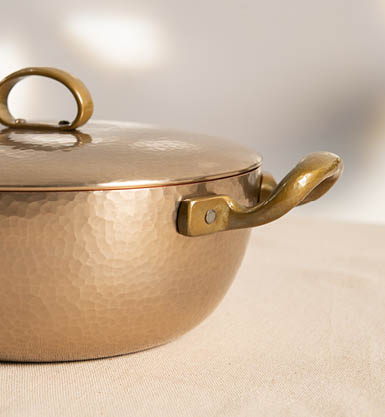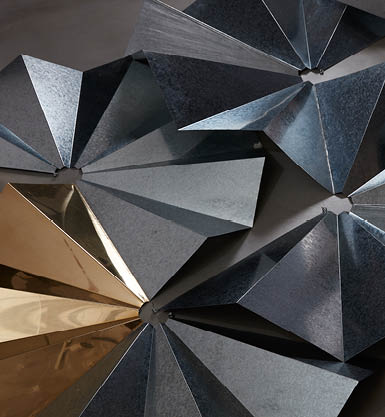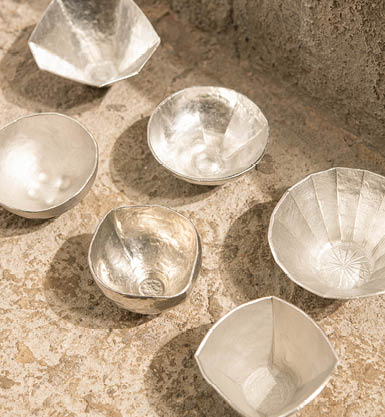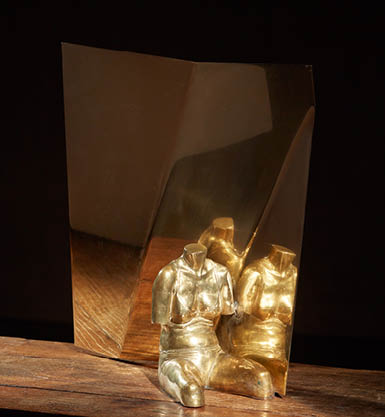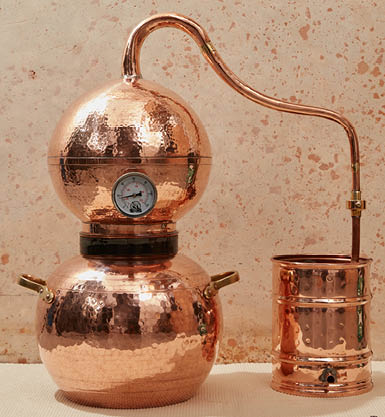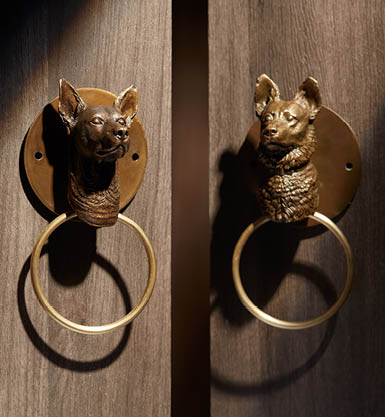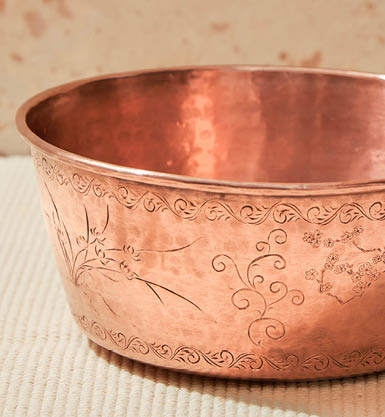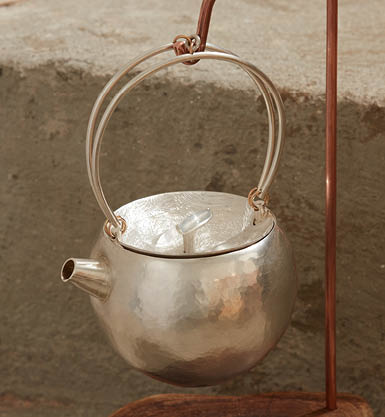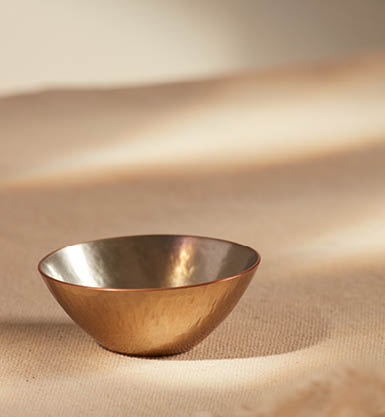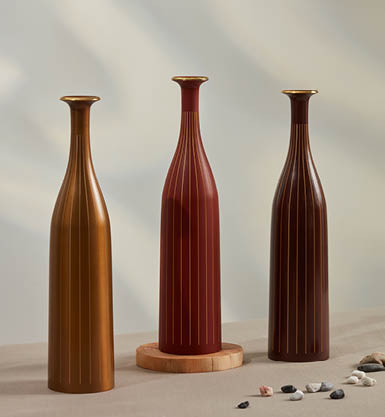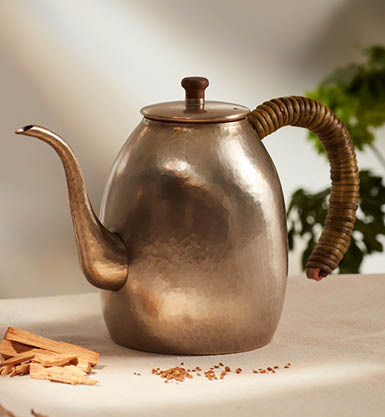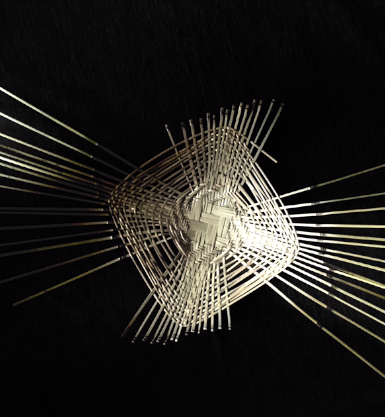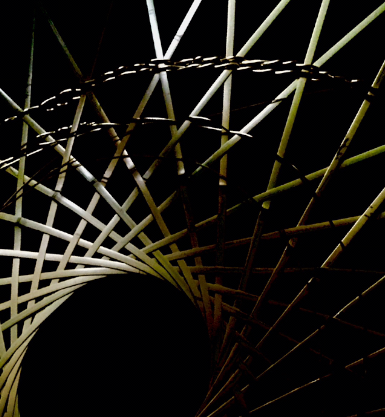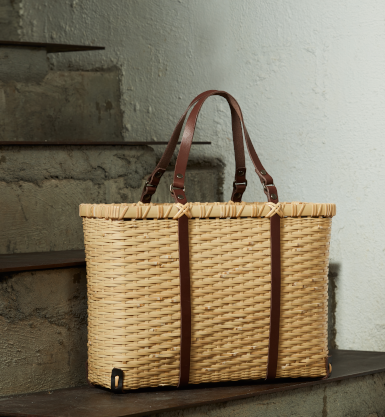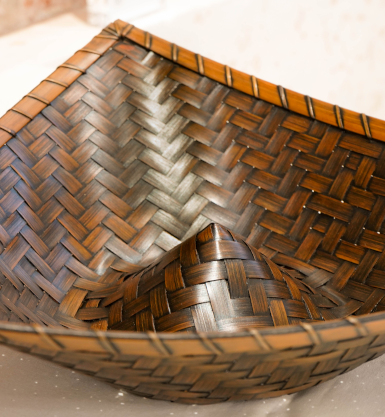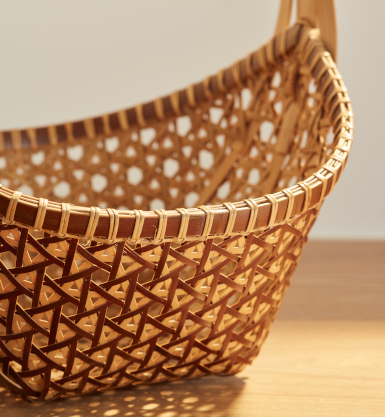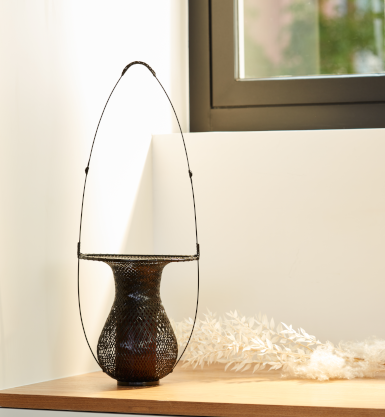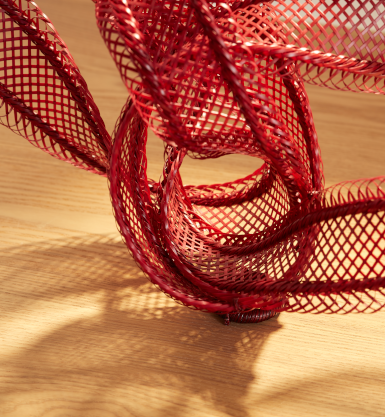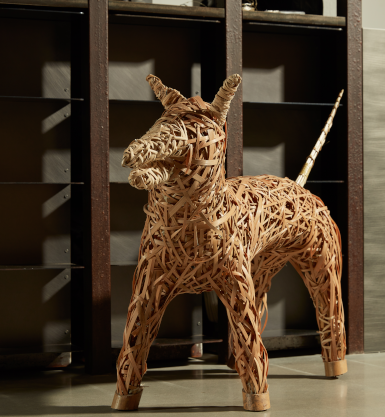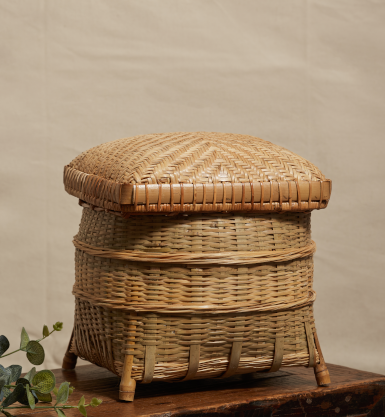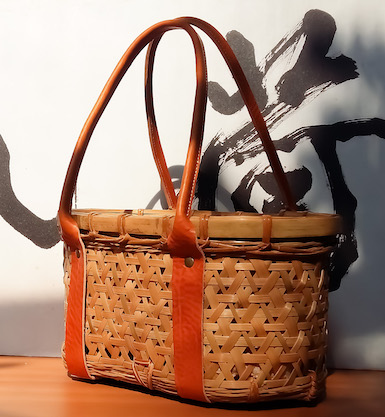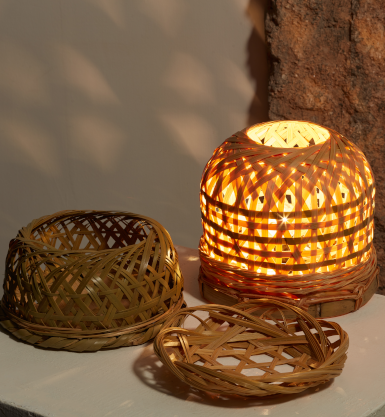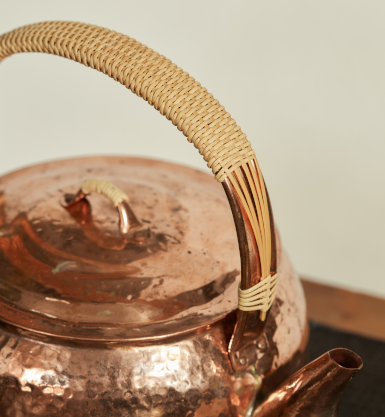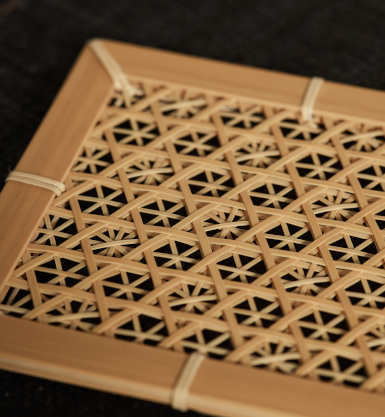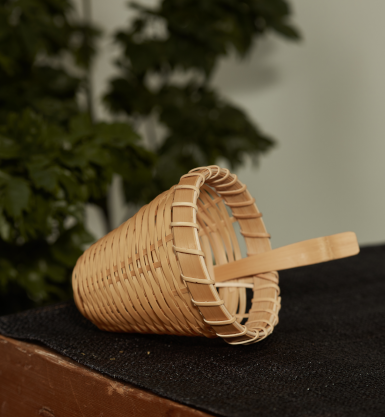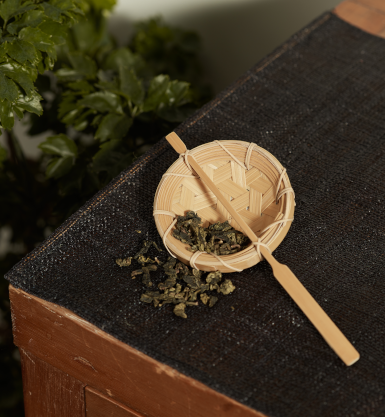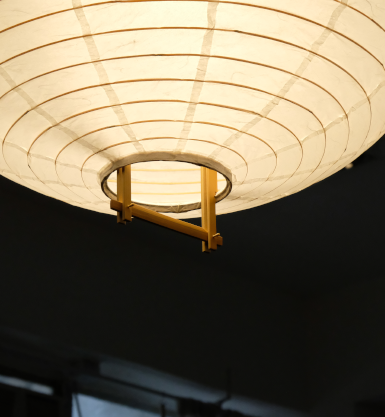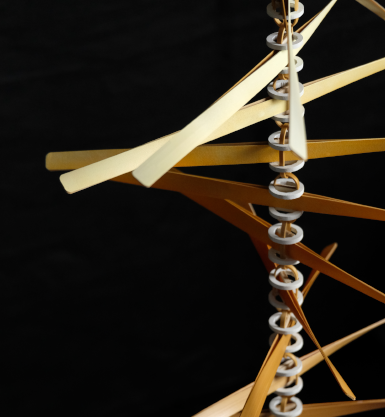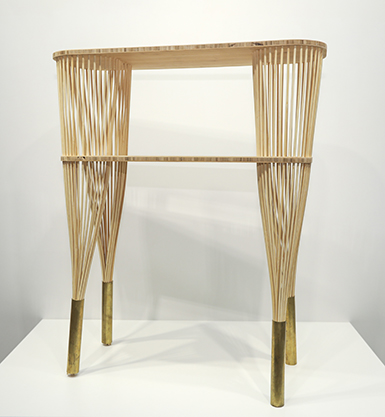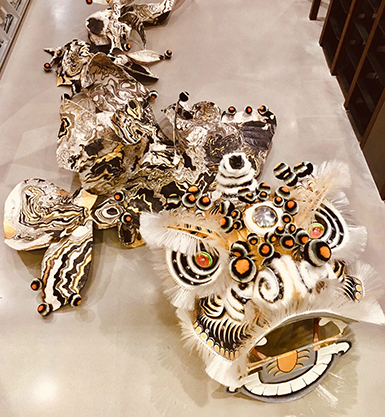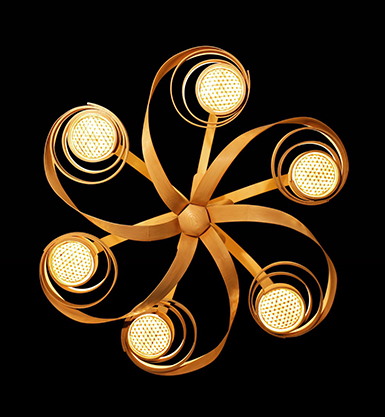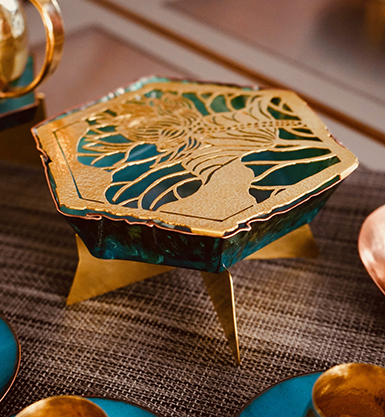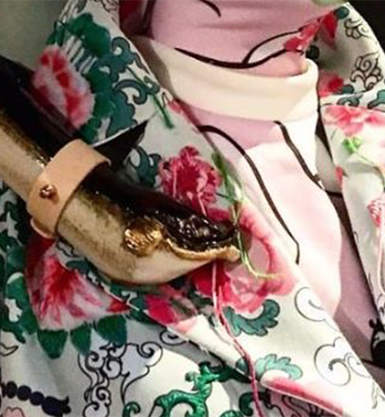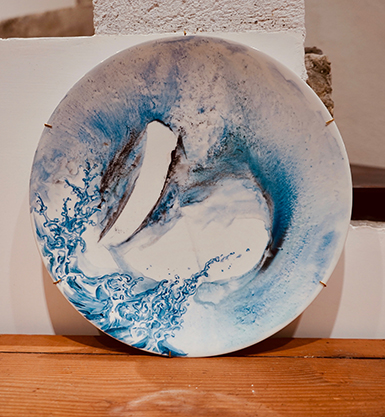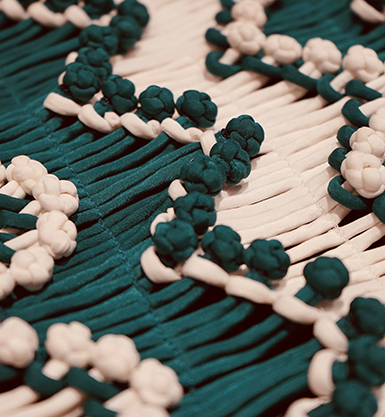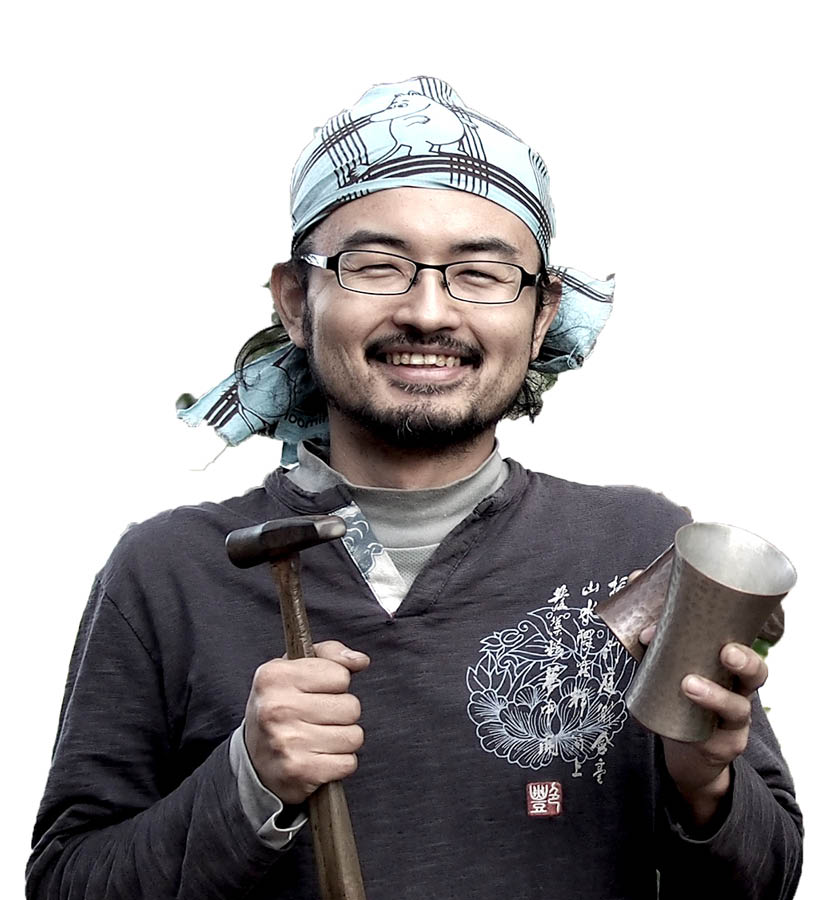Streamline Sake Cups
The surface of the sake cups is coated with different patinas to create vivid colors. The thin rim is a mark of superb craftsmanship.
STORY OF THE TRADITIONAL CRAFT
Yasutaka Oohashi’s father mastered the Tsubame-tsuiki technique of copperware at the most renowned copperware workshop — Gyokusendo. Surrounded by copperware since a young age, his passion for the copper craft began to grow. When he was twenty-two, he apprenticed at Gyokusendo and later became an independent metalsmith and started his brand. In Japan, building one’s own brand after fully acquiring the skills from the master is not uncommon. Craftsmen respect and learn from one another.
Yasukata will first communicate with customers to understand the design, and then start production. It takes approximately two weeks to produce a simple design
Tsuiki Copperware is the lifeblood of the Tsubame area. Therefore, Yasutaka is determined to reflect the excellent technique in his copper works. In the beginning, it would take Yasutaka a week to make a single copper cup, now it only requires him a day to accomplish the same task, but the early challenges will always inspire him.
The habits of his customers directly impact the demand for his product. For instance, when induction stoves were popular, demands for copper pots slumped since copper’s low electrical conductivity makes it ill-suited for these stoves. Yet, with the resurgence of gas stoves, copper pots have become much sought after once again. As traditional crafts evolve, so does copperware, which ebbs and flows with the current of the times.
Yasutaka believes that putting his heart and soul into his works makes them more meaningful. He hopes to share his joy and passion for crafts with his customers.
MAKING PROCESS
Tsuiki is a raising and sinking technique which involves a variety of tools to stretch and compress the metal. The techniques have been passed down since the Edo period. It has a history of approximately two hundred years in Tsubame-shi, Niigata.
First, he brainstorms the shape of the work with the customer. While understanding the customer’s preference, he decides on the design, cuts out the appropriate size on a square copper sheet, and hammers it into the basic form. He then places the piece on an iron rod called Toriguchi and forges it repeatedly with a hammer. His hammering gesture is relatively inclined, which is different from the usual way of forging it vertically.The copper hardens during the forging process, so it is "annealed" to soften it and then it is shaped with various Toriguchi and hammers. Finally, he coats the inside of his finished works with tin and dips them into a hot sulfate solution to prevent rusting and to stabilize the color.
Artworks from same series
Craftsman
OTHER WORKS FROM EXHIBITION
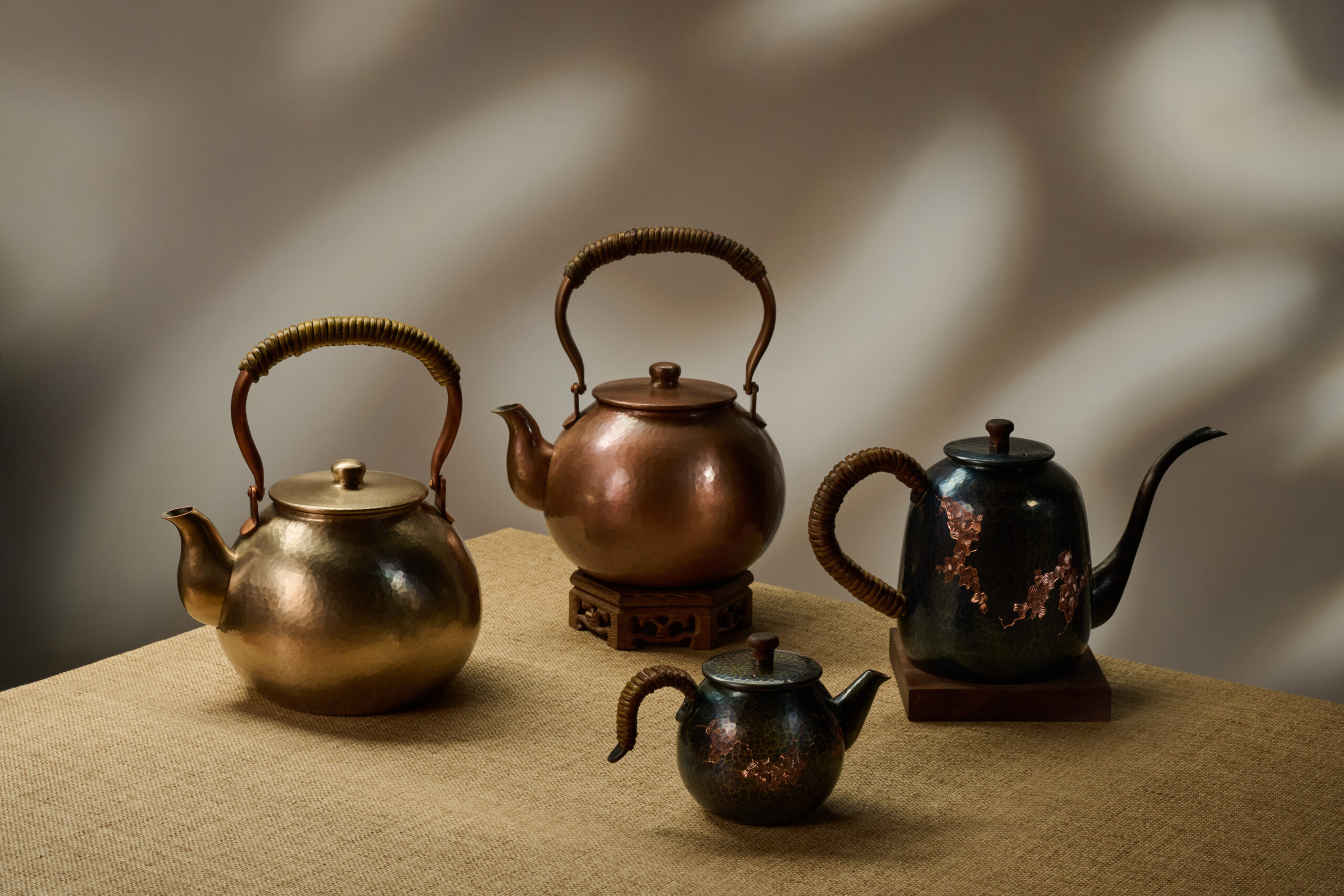
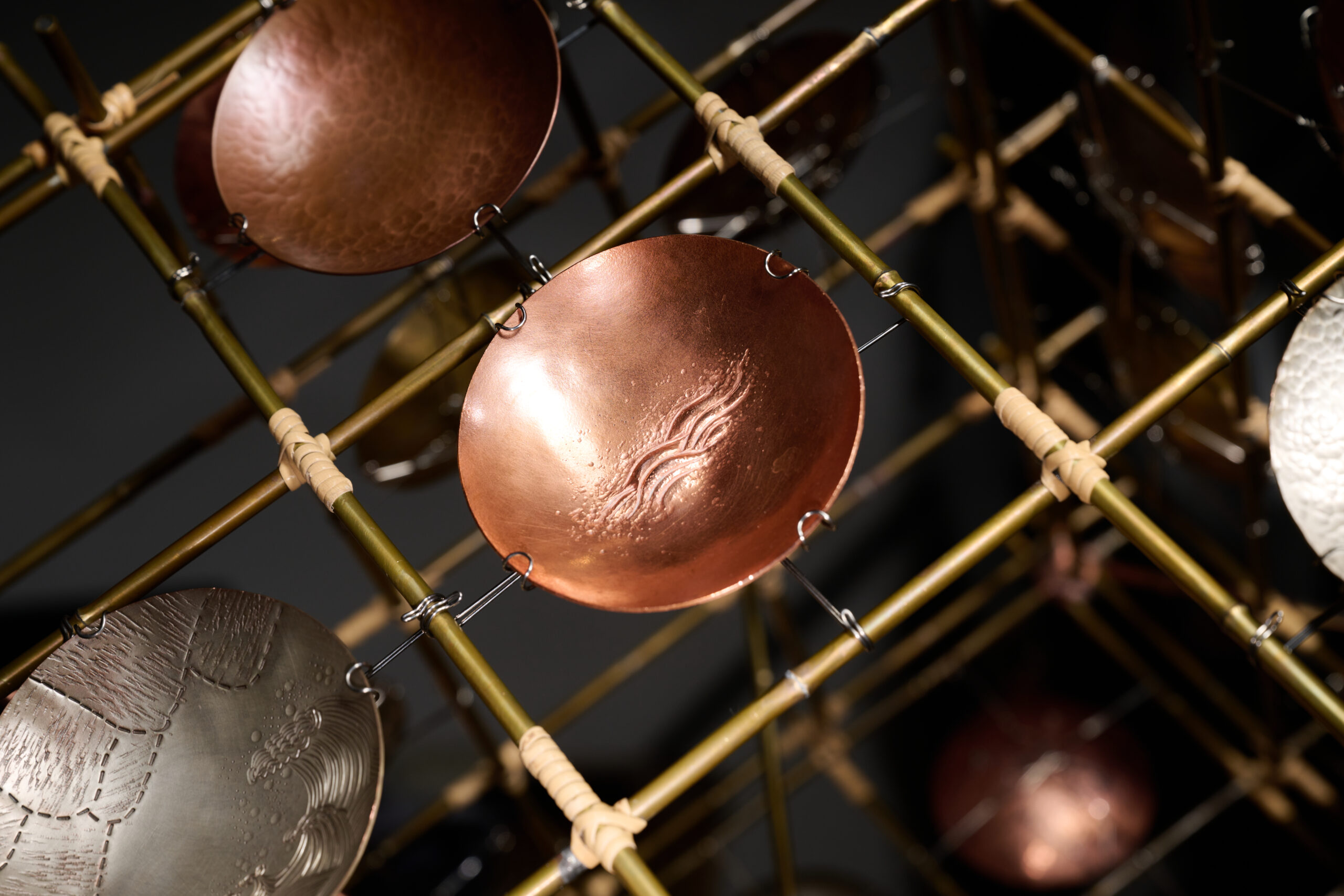
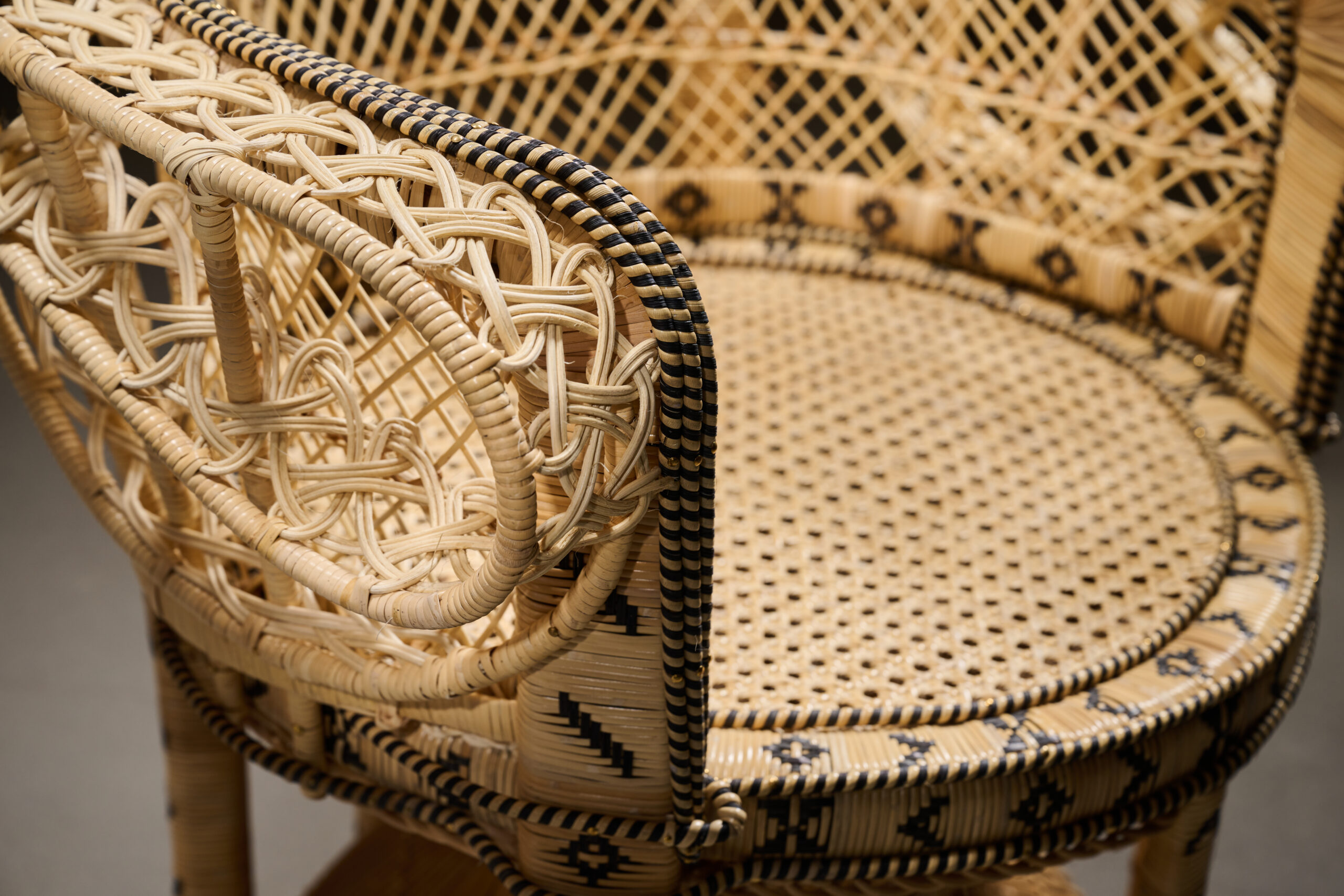
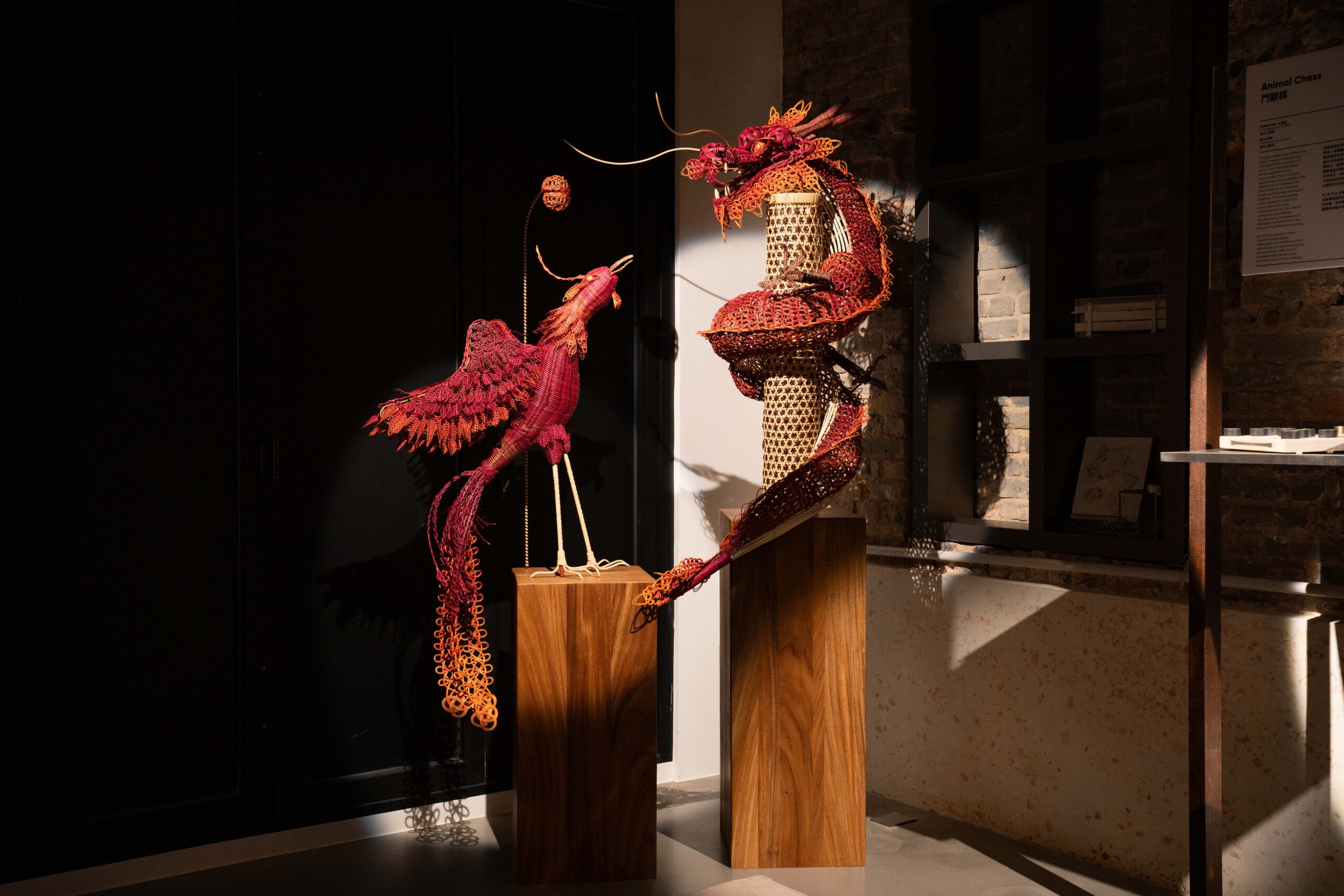
Auspicious Horizons
Yue Kee Rattan Factory & Ahung Masikadd & Barnard Chan & Cecilia Lai


